





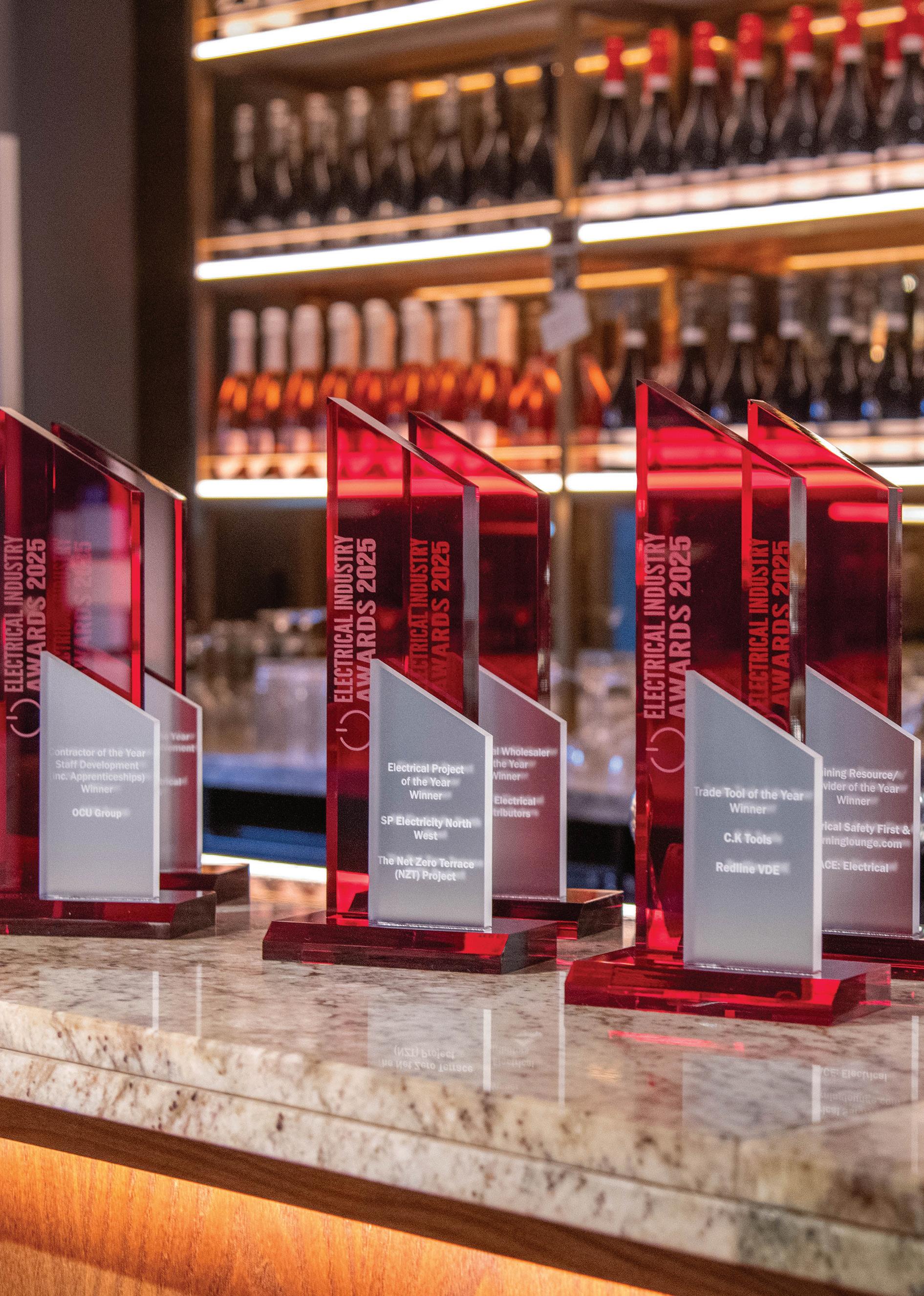








the All in One
GivEnergy’s All In One 2 is here, making energy storage simpler than ever.
With a powerful 12 kW inverter and 13.5 kWh capacity as standard, it’s designed for fast, hassle-free installation, with a modular design that makes handling and setup effortless.
Perfect for all homes with or without solar panels, the All in One 2 allows users to store off-peak grid energy to save money, reduce reliance on non renewable energy, and future-proof their homes.
Streamlined for installers. Trusted by contractors. Ready for tomorrow’s energy needs.
Backed by a 15-year warranty as standard, and offering optional whole-home backup and six-string solar MPPT integration, the All-in-One 2 sets a new benchmark for British battery storage. The new and improved GivInstaller app
Faster commissioning, smoother installs, real-time validation. Your installs made simple.
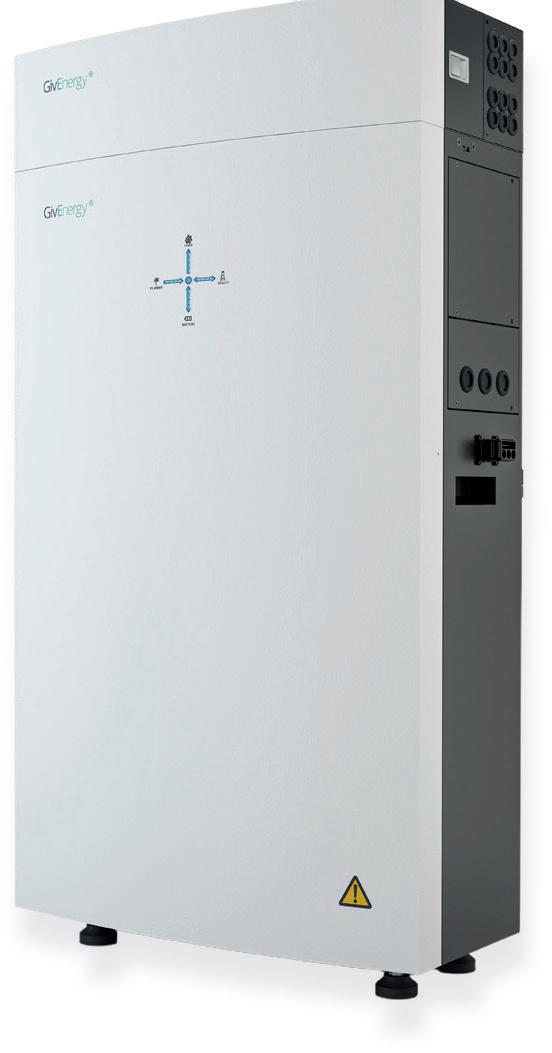

Every system you install counts. Earn rewards and every quarter be in with a chance to win a VW ID buzz.



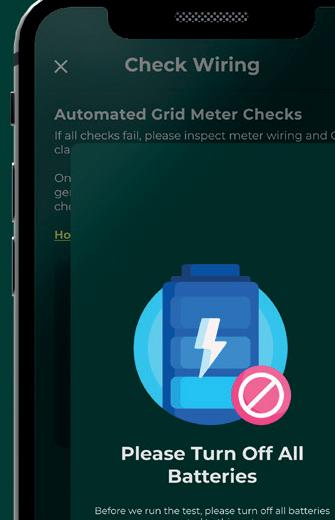

































tackling efficiency and compliance
24 Scaling with software
TOOLS & WORKWEAR
26 Everyday armour
27 Countdown to Christmas
28 Rethinking protective uniforms in electrical environments
RENEWABLES
30 Electric heating: unlocking the true value of renewables 32 How residential electrification



The industry response to the Autumn Budget is marked by frustration and concern, tempered by cautious optimism in a few areas. Across construction and the wider trades, there is a strong feeling that small firms and sole traders are being asked to absorb higher risks at the very moment they most need stability. Rising wage bills, increased National Insurance and frozen tax thresholds are viewed as additional pressures on businesses already operating on narrow margins, with many feeling they are effectively being penalised for keeping the country’s infrastructure functioning.
The £13 billion in flexible regional funding is welcomed, but its value hinges on whether it reaches housing, retrofit, regeneration and local infrastructure projects that translate into real work for trades. The £820 million youth guarantee and wider skills funding are also positive signals, though many fear they will flow mainly to larger organisations unless access for small firms is protected. Overall, these green shoots are overshadowed by what the sector views as a lack of direct, targeted support, leaving many to conclude that the Budget remains disconnected from on-the-ground realities, including mental health, late payments and long-term security of work.
Lisa Peake, EDITOR, lisa.peake@purplems.com



BSRIA has appointed John Taylor as Publications Manager.
This strategic appointment will increase the volume of high-quality guidance, reports, brochures, how-to-guides, and more, while accelerating the digital transformation of BSRIA’s content. A key part of Taylor’s remit will be to help transition BSRIA’s publications to be more digitally enabled and accessible.

Lucy Electric has announced the appointment of Tom Goodman as General Manager of Lucy Electric EV Infrastructure.
Tom brings a wealth of experience in operational management and EV infrastructure roll ou. He is ideally positioned to drive the growth and sales of the company’s network solutions and technologies.

B.E.G. is pleased to announce the appointment of Daniel Glynn as the new Sales Director for the UK and Ireland.
Glynn, who brings over 15 years of experience in the lighting industry, steps up from his role as regional director at the German manufacturer and takes over from Paul Jones.
In his new role, Glynn says he will be focused on driving business growth, expanding the company’s reach, and continuing to build strong relationships with both new and existing clients.

Ovia is pleased to announce the appointment of Barnaby Chapman as Area Sales Manager, covering South Wales, Worcestershire, Herefordshire and Gloucestershire.
Barnaby brings with him four years of experience in the electrical wholesale sector, his solid grounding in customer-focused roles gives him valuable insight into the needs and challenges of the industry.

Gary Crockett has joined the team to lead its nationwide sales force. phs Compliance services over 35,000 business sites across the country providing everything to stay safe and compliant, including electrical testing and remedial services and fire systems service and maintenance.
Prior to joining phs Compliance, Gary spent over a decade as sales manager for a European leader in office supplies and workplace solutions where he achieved significant levels of growth for the business.

CU Phosco is pleased to announce the promotion of Irina Pirtac to the role of Lighting Design Manager, just short of her two-year anniversary with the company.
Irina joined CU Phosco in 2024 as a Lighting Designer, bringing with her nearly 20 years of experience in the lighting industry. Having begun her career in 2006, she has worked in lighting design for eight years, building an extensive portfolio across commercial, logistics, industrial, architectural, and street lighting projects.
More than 2,100 hectares of Romney Marsh, an area more than three times bigger than Gatwick Airport,will be lost to mega solar farms if current proposals are approved, a CPRE Kent assessment reveals.

Despite national planning policies designed to protect high-quality farmland, the three proposed mega solar farms will be entirely located on farmland.The plans would also see several historic churches surrounded almost entirely by solar panels.
The Government’s Solar Roadmap, published in June 2025, sets a target of 60-65 per cent of the UK’s solar energy to come from large-scale solar farms. Previous CPRE research has shown that installing solar panels on the roofs of suitable domestic and industrial buildings, as well as on car parks, could easily deliver over 60
per cent of the government’s target for solar energy.
National CPRE campaigns lead Jackie Copley said: “Vast fields of solar panels would dominate the area for miles, altering the character of a well-known and cherished region. Previous CPRE research has revealed that there is enough space on the roofs of suitable buildings, as well as car parks, to deliver more than 60 per cent of the government’s target for solar energy.”
CPRE Kent director Andrea Griffiths added: “The transition to renewables does not need to come at the cost of the countryside, which provides a wealth of ecosystem services. We know that there are enough suitable rooftops for at least 60 per cent of UK’s solar energy, but we need to see proper policy support.”
ECA (Electrical Contractors’ Association) is one of more than 50 signatories in a letter to the Chancellor, Rachel Reeves MP, calling for the Government to prioritise reducing electricity levies to help achieve greater economic growth.
Currently, electricity prices are four times higher than gas, making it difficult for households and businesses to switch to cleaner fuel.
Andrew Eldred, Deputy CEO at ECA, said: “ECA has long advocated for the reform of levies on electricity by rebalancing of taxation between electricity and gas. In Britain we are paying some of the highest electricity prices in the world, slowing down the adoption of electrification in heat and transport.
“ECA recently held a Parliamentary roundtable event on our Blueprint for Electrification report, which is a practical roadmap for delivering a fully electrified, low-carbon economy. The Blueprint’s strength is in bringing together perspectives from all aspects of the electrical supply chain, and this unique perspective was reflected around the table. Attendees were in agreement that if we want to accelerate electrification and reach Clean Power 2030, we must first tackle the high cost of electricity. We hope that the Autumn Budget will provide a way forward on this.”
Through smart operation of a distribution network that serves over eight million customers, National Grid’s Distribution System Operator (DSO) has managed to avoid 450 GWh of customer curtailment in the six months from April 2025 to September 2025.

Curtailing the amount of locally generated power going into the system during maintenance periods is vital for safe working, and this curtailment is accessed by asking local energy producers to turn down the amount that they generate.
This represents a 20 per cent reduction against the total curtailment necessary for maintenance and upgrades in the previous 12 months.
In April, the DSO set a target to reduce annual curtailment by 300 GWh during planned outages for system maintenance. This target has been exceeded in just a few months with the September 2025 figure of 450 GWh of avoided curtailment.
This means that energy powering local homes and businesses needs to come from other sources, often from much further away. Reducing curtailment at these times allows the DSO to maximise the amount of affordable and clean energy that is locally generated - a boost for customers.
The quarterly Key Performance Indicator report can be downloaded: https:// dso.nationalgrid.co.uk/resource-centre/ publications-library.
The development of the UK’s first battery storage system powering ultra-rapid EV chargers at a motorway service station has reached a significant milestone, with the installation at Welcome Break Corley Services on the M6 northbound now fully operational.
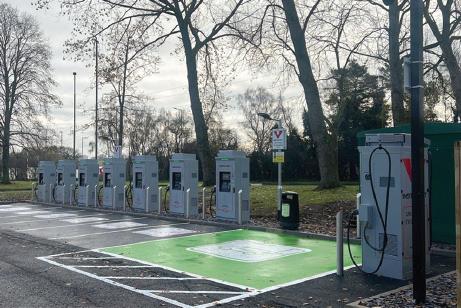
This pioneering project – the first on the UK motorway network to connect battery storage directly to ultra-rapid chargers –forms part of InstaVolt’s wider programme to deploy energy storage across its network. The large battery storage unit has been installed at the Northbound Corley Services on the M6, between Junctions 3 and 3A. The battery system is designed to store electricity on site and distribute it directly to the chargers. This reduces reliance on large grid connections and supports
consistent charging performance during periods of high demand – helping to manage standing and capacity charges.
As part of the upgrade, InstaVolt is also replacing existing infrastructure with new 160kW ultra-rapid chargers - the northbound side features eight chargers including a new fully accessible bay – further demonstrating InstaVolt’s commitment to inclusivity for electric charging for all.
John Diviney, CEO of Welcome Break, said: “At Welcome Break, we’re proud to be leading the way in transforming motorway services for the future. This development reflects our ongoing commitment to delivering a seamless and reliable EV charging experience for all drivers.”

Vent-Axia has welcomed the Government’s publication of its Healthy Homes Standard, a set of design requirements and good-practice guidance for building homes that is designed to support the delivery of healthier living environments.
The design of new homes plays a vital role in preventing many avoidable health problems. Ensuring good indoor air quality (IAQ), comfortable temperatures, plenty of natural light, and energy efficiency is key to creating homes that minimise the risk of respiratory conditions, overheating, and stress-related health problems. A Healthy Home refers to a new dwelling designed to support long-term physical and mental wellbeing, while supporting people to live active and fulfilling lives.
A key feature of the new standard is its focus on indoor air quality and ventilation, with the standard stating that ‘the preferred ventilation strategy for Healthy Homes is a high-efficiency (greater than 75 per cent efficient) Mechanically Ventilated Heat Recovery (MVHR) system, designed in accordance with the Passivhaus standard’. This focus reflects growing awareness of the importance of fresh, filtered air and low-carbon ventilation systems in modern, airtight homes. Meanwhile, a core requirement of the standard is a whole life carbon assessment for both homes and wider development infrastructure.
Schneider Electric has unveiled ‘Build My Business’, a new training programme designed to help electricians start, manage, and grow their businesses. This flexible eLearning series provides essential skills and practical guidance for both newcomers and experienced electrical professionals.

The ‘Build My Business’ programme features five modules covering everything from business planning and financial management to digital marketing, customer relations, and leadership. Electricians can choose the modules most relevant to their needs and business including:
Start My Business: Key considerations for launching a business, including marketing,
budgeting, and insurance
Finance My Business: Practical advice on budgeting, pricing, cost control, and using online tools for profitability
Promote My Business: Strategies for building an effective online presence, leveraging websites, SEO, social media, and customer reviews
Run and Grow My Business: Advice on customer service, adopting new technologies, and staying ahead of industry trends
Lead My Business: Guidance on team management, leadership skills, and motivating staff for long-term success.
To access the Build My Business e-book for Electricians, visit: http://bit.ly/49CbGn9
NAPIT Training, in partnership with Elmhurst Energy, is pleased to be offering a brand-new course on Domestic Ventilation. The BPEC Domestic Ventilation course has been designed for experienced electricians, plumbers, ventilation installers, and heating engineers seeking to enhance their knowledge of domestic ventilation.
The course covers the installation, inspection, testing, commissioning, and provision of information for fixed Domestic Ventilation Systems. With this course, tradespeople will be qualified to test and commission ventilation systems for retrofitting and offer ventilation reports.
A ventilation report is carried out to show compliance with Approved Document Part F of the Building Regulations. It is a requirement for new build properties to have a ventilation report as part of new build compliance.
It also plays a key role in retrofit projects, helping to ensure that improvements to the building fabric and services do not compromise indoor air quality or increase the risk of condensation and mould. The Domestic Ventilation course has been structured to meet the requirements of the Approved Document Part F of the Building Regulations 2020 and is recognised as an approved demonstration of competence for Competent Person Schemes.
NAPIT Training will offer the course across four training centres: Mansfield, Bristol, Oldham and Potters Bar. It will take place over two days, and the assessments consist of a combination of practical and theoretical examinations.
Brett Forster, Head of Training, said: “NAPIT is committed to training to the highest industry standards, while ensuring they have the right skills to help the UK achieve its government-set targets. With new build homes required to issue a ventilation report and rising demand from the retrofit sector, this qualification offers NAPIT members a valuable opportunity to future-proof their business and expand their services.”
Josh Wakeling, Head of Training at Elmhurst Energy, added: “We are delighted to be working alongside NAPIT to deliver this important training. Ventilation is a critical part of building performance and compliance, not only for new builds but also for retrofit projects under PAS 2035.
“This course ensures that tradespeople have the competence and confidence to meet regulatory requirements while supporting healthier, more energy efficient homes.”
View at: napit.org.uk/napit-training/ electrical-training/bpec-dom-ventilation

On Thursday, October 23, electrical contractors, manufacturers and industry organisations tuned in at www.electricaltimes.co.uk for the Electrical Industry Awards 2025. Editor Lisa Peake provides an overview of the event...
The electrical sector came together virtually for the 33rd Electrical Industry Awards, presented by ET and W&ED. The event once again shone a spotlight on excellence, innovation and achievement across the UK’s electrical sector, showcasing an inspiring line-up of finalists, highly commended and winners from every corner of the country. These entries represented the very best in technical expertise and forward-thinking performance.
As the sector adjusts to updated regulations, revised standards, and more ambitious sustainability targets, this year’s awards honoured the people, products, and projects pushing genuine progress across the sector. This progress included energysmart design, as well as the delivery of remarkable training and community initiatives that support long-term industry development.
In her welcome address, Sarah Keith-Lucas, meteorologist and BBC weather presenter, said: “Over the past year, electrical contracting has faced new regulations, evolving standards and shifting market demands, yet the sector has continued to rise to the challenge. From accelerating low-carbon technologies to keeping communities powered and safe, our industry has once again proved its resilience and innovation.”
The presentation featured a total of 12 award categories, recognising excellence across products, services, projects, contracting and wholesaling. From groundbreaking technologies to initiatives supporting apprenticeships, sustainability and community safety, the finalists reflected the skill, creativity and dedication that continue to power the industry forward and inspire future generations of professionals.
A huge thank you goes to all of our sponsors for their generous support of the Electrical Industry Awards 2025: main sponsor Luckins Live, section sponsor Aico, and category sponsors WISKA and NAPIT. We would also like to extend our gratitude to the expert judging panel, comprising representatives from leading industry bodies including the ECA, JIB, LIA, NAPIT and NICEIC, who had the difficult task of selecting winners from such a talented and competitive field of entries.
If you missed the live ceremony, don’t worry — the virtual event will remain available on our website, www.electricaltimes.co.uk, for the next couple of months. Be sure to watch and celebrate the incredible talent and innovation shaping the electrical industry’s future.


Engaging
Energising
Enabling
Empowering
















Winners of the Electrical Industry Awards 2025 came together on Friday, November 14 for a relaxed and uplifting afternoon at The Prosecco House, One Tower Bridge, London
Held following the online announcement of this year’s results, the dedicated winners’ reception gave guests the chance to celebrate their achievements in person, enjoy good food and drink, and connect with colleagues from across the industry.
Guests were welcomed with a champagne reception and after time to mingle and reconnect, guests gathered for the trophy presentations, hosted by compère James Cooke. James opened the ceremony by thanking this year’s sponsors –LuckinsLive, Aico, WISKA and NAPIT – as well as the expert judging panel: Frank Bertie (NAPIT), Helen Atkinson (ECA), Dan Woods (JIB), Paul Collins (NICEIC) and Dan Griffiths (LIA). This year’s winners included:

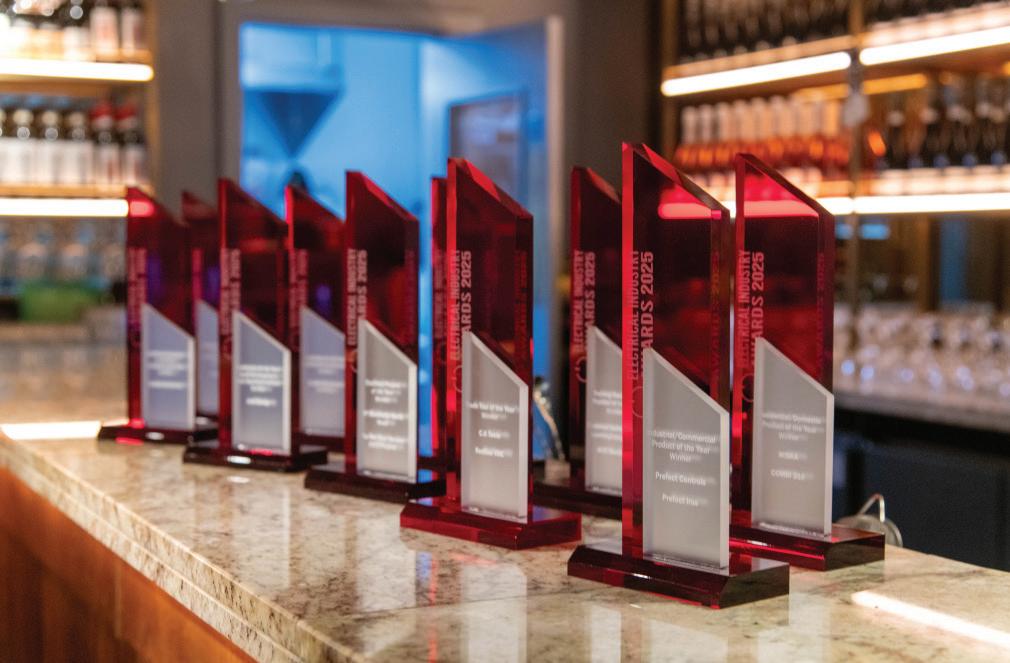
• Industrial/Commercial Product of the Year
Prefect Controls – Prefect Irus
• Residential/Domestic Product of the Year
WISKA – COMBI 310
• Lighting Product of the Year
Thorn Lighting – College 2
• Trade Tool of the Year
C.K Tools – Redline VDE range
• Training Resource/Provider of the Year
Electrical Safety First and Learninglounge.com –
ACE: Electrical
• Renewable Installation of the Year
EvoEnergy – Paultons Park solar project
• Electrical Project of the Year
SP Electricity North West – Net Zero Terrace
• Electrical Wholesaler of the Year
TEP Electrical Distributors
• Contractor of the Year
Staff Development: OCU Group
• Contractor of the Year – Community Involvement
Danbro Electrical Services
• Contractor of the Year (Under £5m)
Sidmar Electrical
• Contractor of the Year (Over £5m)
Powercor Ltd
Following the presentations, guests enjoyed a selection of small plates and drinks while continuing to celebrate, network and reflect on their achievements. The afternoon also featured close-up magic from Neb Magic, creating a fun and unforgettable highlight to the event.
Now in its 33rd year, the Electrical Industry Awards continues to highlight the creativity, expertise and



dedication behind the sector’s ongoing innovation. Winners were recognised for exceptional work across a wide range of categories, including product development, training, renewable energy, community engagement and contracting.
The reception once again highlighted not only the achievements of this year’s winners but also the shared commitment and community spirit that continues to drive the electrical industry forward.
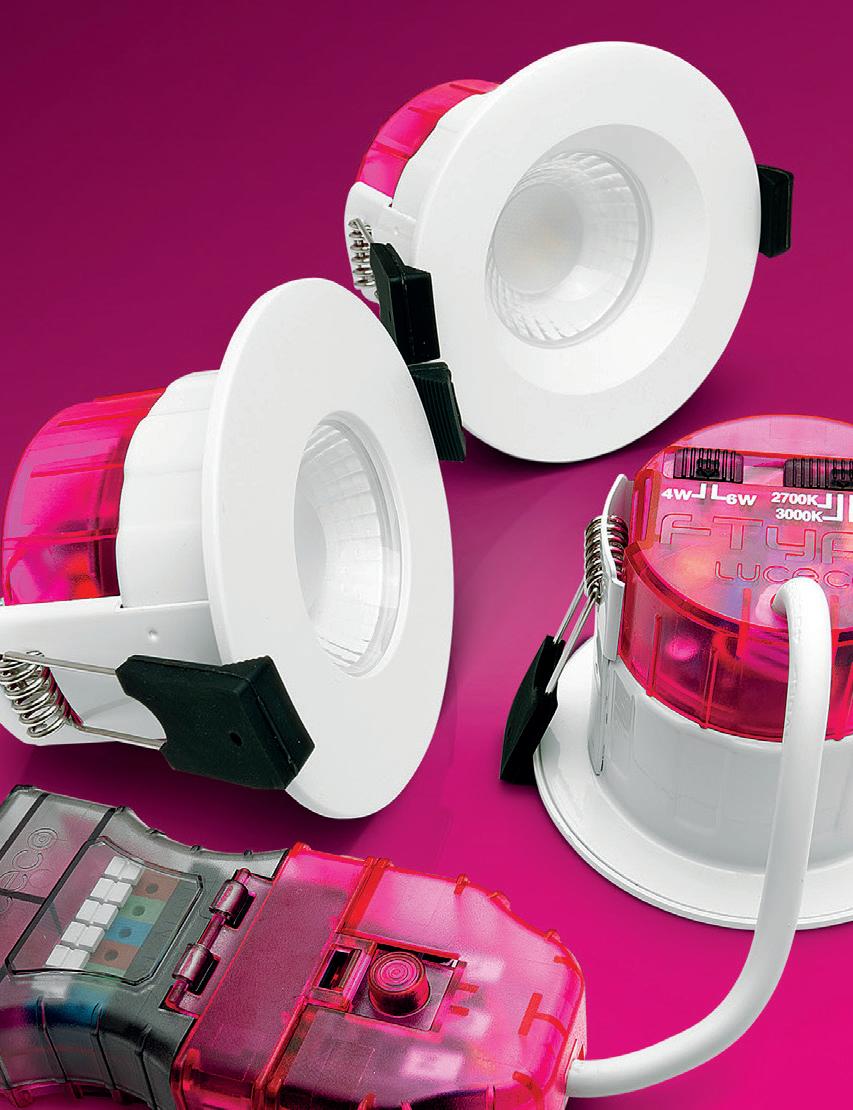






INDUSTRIAL/COMMERCIAL PRODUCT OF THE YEAR
Prefect Controls – Prefect Irus

LIGHTING PRODUCT OF THE YEAR Thorn Lighting – College 2


RESIDENTIAL/DOMESTIC PRODUCT OF THE YEAR WISKA UK – COMBI 310
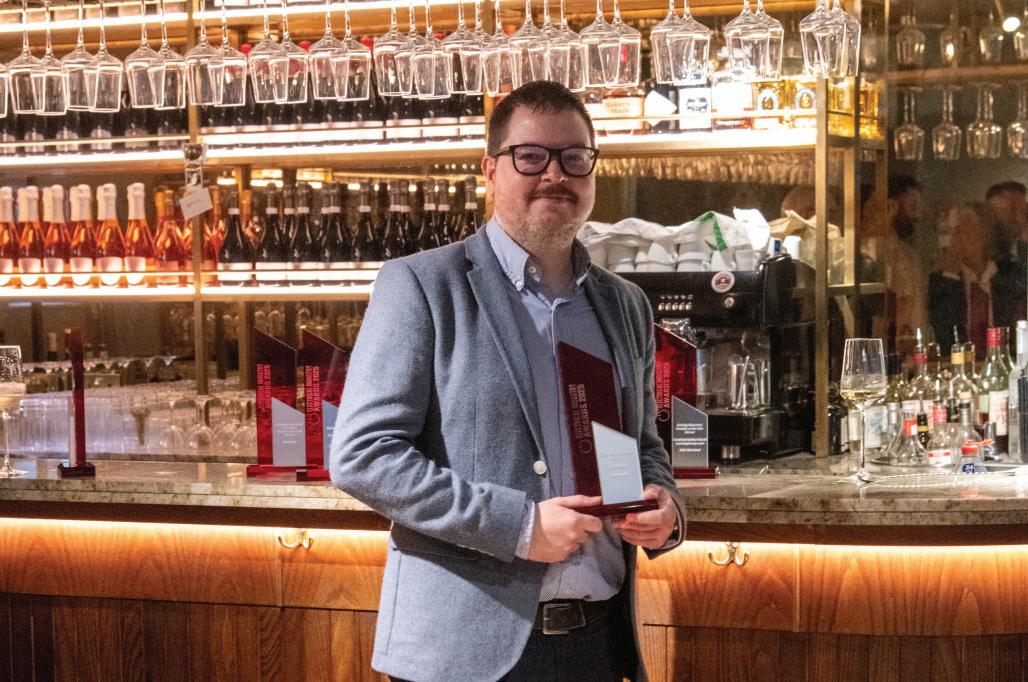


RENEWABLE INSTALLATION OF THE YEAR
















For better grip and comfort
ANTI-SLIP HORNS
For greater protection






INDUCTION-HARDENED JAWS WITH C.K OPTIMISED GEOMETRY

For increased cutting performance
DROP FORGED ALLOY STEEL
For strength and durability
NEW LANYARD TETHER POINTS
For safety in and out of hand
VDE APPROVED
Tested to 10,000V 2-COMPONENT ERGONOMIC HANDLE DESIGN

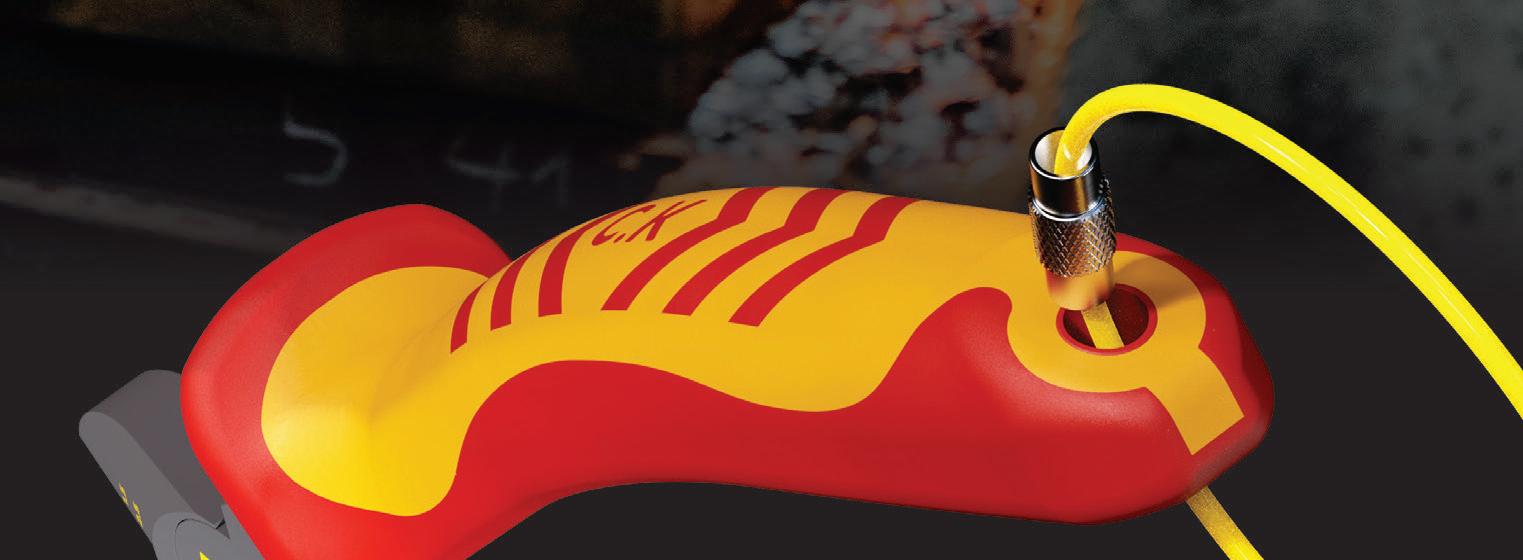














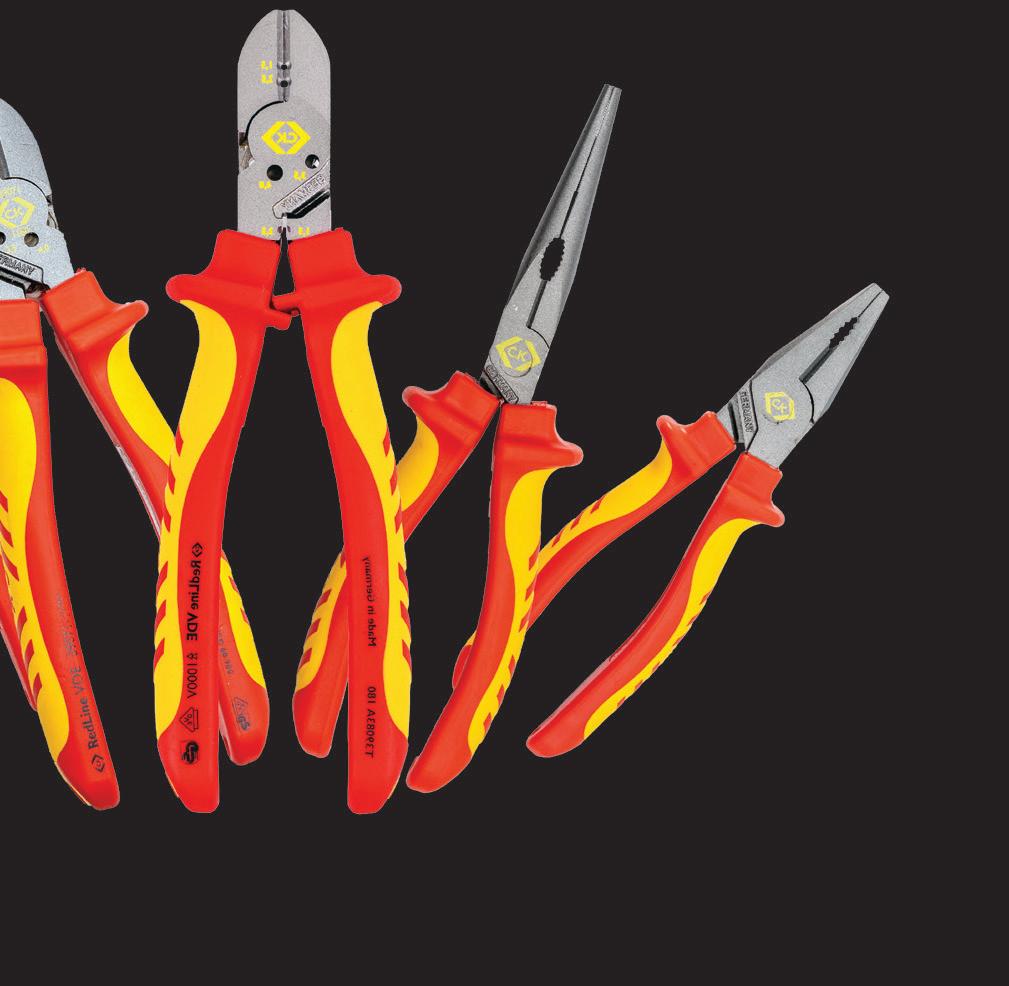










ELECTRICAL PROJECT OF THE YEAR
SP Electricity North West – The Net Zero
Terrace (NZT) project

CONTRACTOR OF THE YEAR - STAFF DEVELOPMENT
OCU Group

CONTRACTOR OF THE YEAR (UNDER £5M)
Sidmar Electrical


WHOLESALER OF THE YEAR
TEP Electrical Distributors

CONTRACTOR OF THE YEARCOMMUNITY INVOLVEMET
DanBro Electrical Services
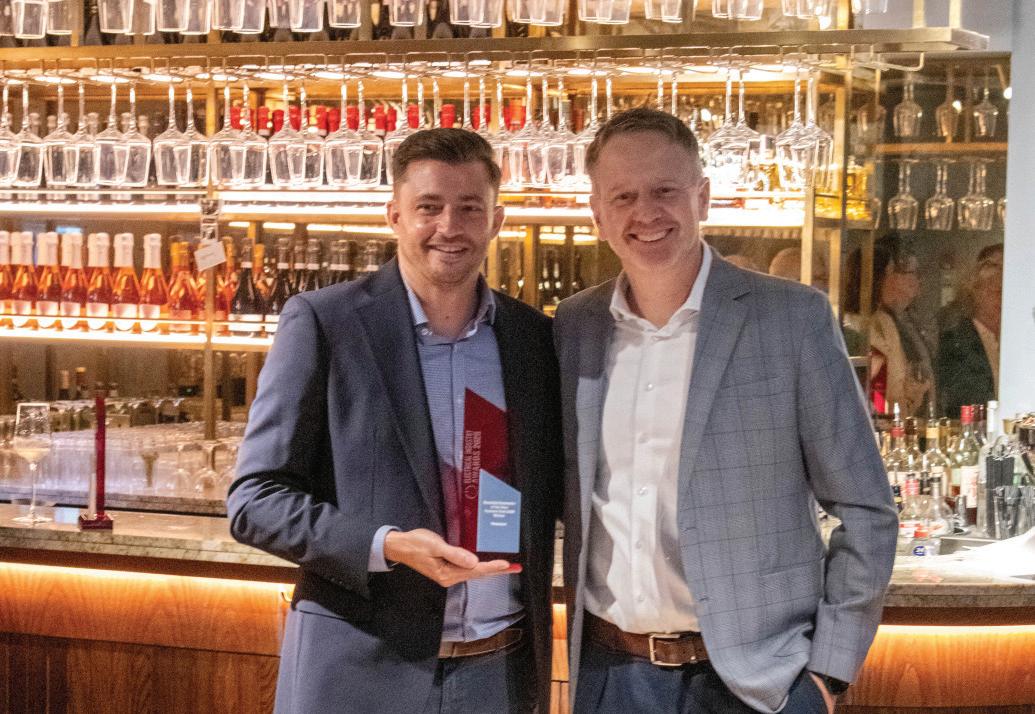
CONTRACTOR OF THE YEAR (OVER £5M)
Powercor
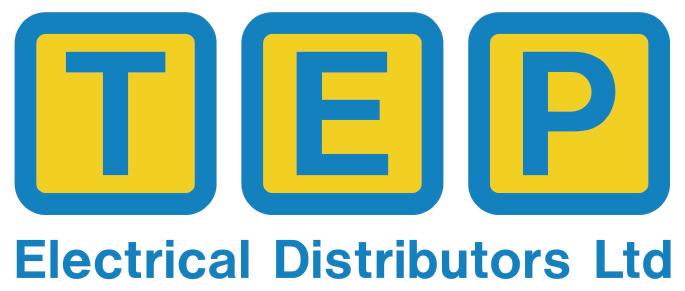
Supporting contractors with reliable supply, technical know-how and multi-site delivery since 1920.
Nationwide supply with one reliable point of contact Why work with TEP
Award-winning service that keeps jobs moving
Trusted brands at competitive prices
Technical support from survey to aftercare
Proven delivery on large, multi-site projects
Expertise to support clients’ net-zero goals
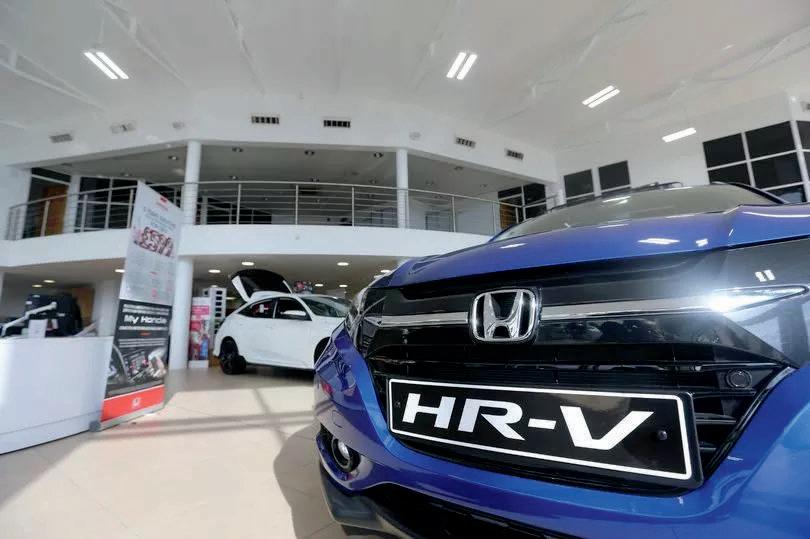


Working alongside contractor teams, TEP delivered a full LED upgrade programme that achieved:


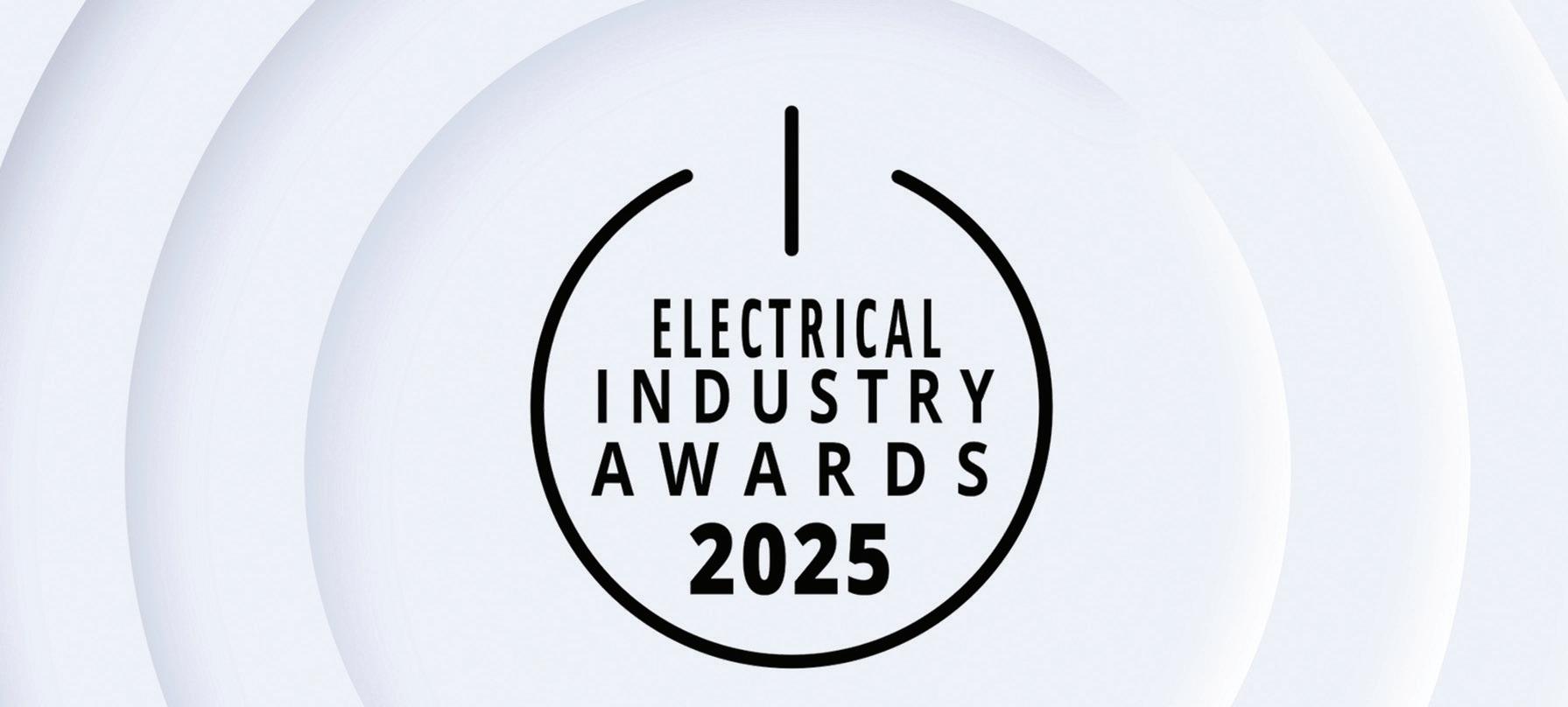
Standing just behind this year’s winners, the highly commended finalists at the Electrical Industry Awards demonstrated outstanding skill, creativity, and commitment to excellence. Their achievements shine a light on the depth of talent across the industry
Industrial/Commercial Product of the Year
Contactum – 250A Distribution Board
Residential/Domestic Product of the Year
Airflow Developments – Ceiling Integrated Valves
Lighting Product of the Year Luceco – Luceco FType Elite
Trade Tool of the Year (including Test & Measurement)
Kewtech – KT64DL Multifunction Tester Megger – EVX100 adaptor
Training Resource/Provider of the Year
JTL – The LEDA Platform
Renewable Installation of the Year
Aztec Solar Energy – Art Studio Curved Roof Solar Project

Electrical Project of the Year EvoEnergy – Birmingham Airport
Wholesaler of the Year
TLC Electrical
Contractor of the Year – Staff Development (inc. apprenticeships)
Lowe & Oliver
Contractor of the Year – Community Involvement C&B Electrical Contractors ltd
Contractor of the Year (Turnover Under 5M) Neale Wadsworth Electrical
Contractor of the Year (Turnover Over 5M)
Pleavin Power
Earning a highly commended award is a fantastic achievement and a testament to your hard work and commitment. Well done!

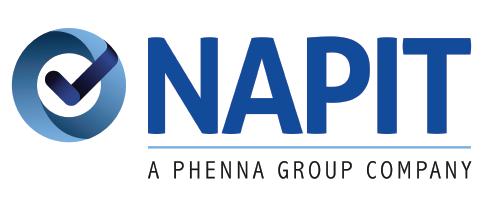
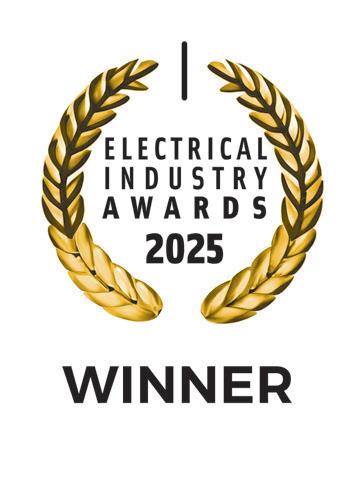
Message individual rooms and encourage more mindful engagement with resources inspiring a reduction in wastage.


With 75,000 controls over 150 sites Irus has more multioccupancy data than anyone other system
Benchmark against your sites or the entire Irus estate



Data interrogation and reporting software tools inform how building services are performing and suggests ways to maximise efficiency

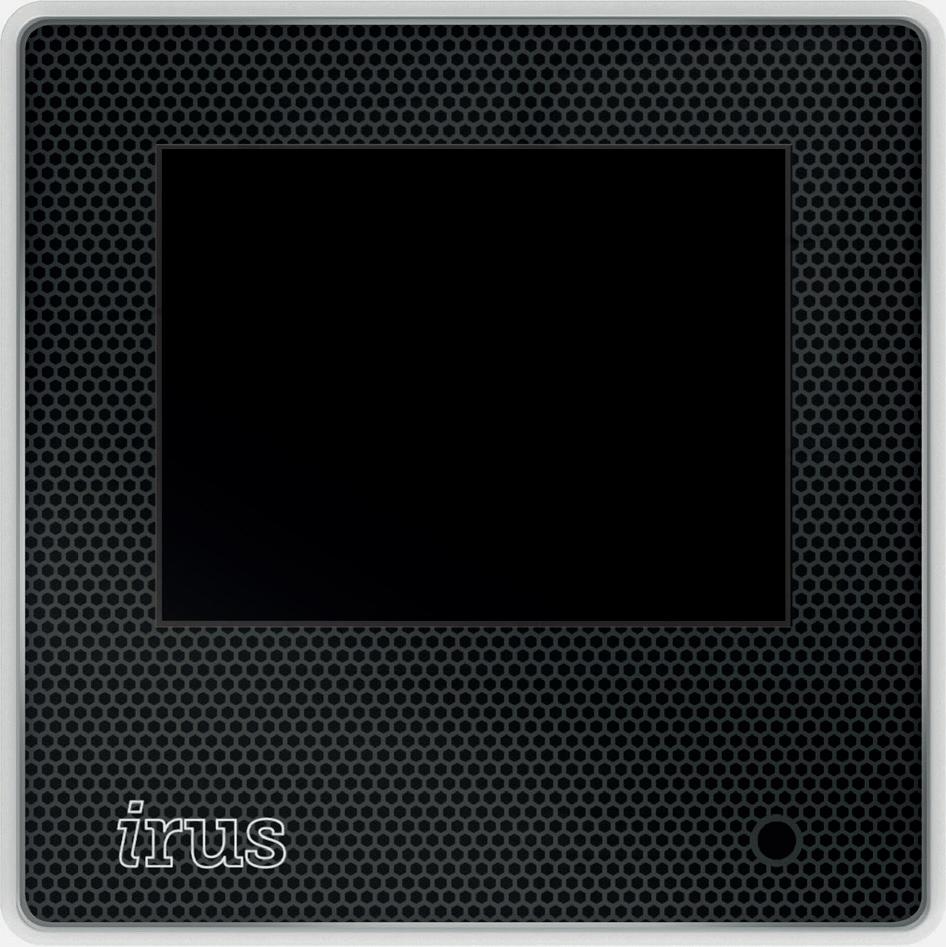






Each room has a ControlSensor communicating with the portal Irregularities are notifiede.g. supplementary heaters, rooms with humidity issues, or profile deviation etc.

Information and data without action is just noise! Irus analyses data and suggests remedial actions to drive operational efficiency.


Direct-to-room messaging provides an unobtrusive communication tool.
E.g. Parcel deliveries, maintenance notifications, and fire drill schedules etc.


Find out how Irus halved the heating load at a student site in year 1.

Thrilled to see our work recognised with the Electrical Industry Award for ‘Training Resource of the Year’. Proudly sharing this award with our friends at Electrical Safety First for ACE: Electrical, the new channel from LearningLounge.com, supporting tutors, apprentices and electricians. Thank you to the judges for the recognition and to all those who have worked with us, supported us, and will be working with us in the future.”
James Fromm, LearningLounge.com
“Thank you Electrical Times (ET) for a great day. We are still buzzing from our award ”
Danny Gregory, Sidmar Electrical
“Congratulations to all the winners at the Electrical Industry Awards 2025. We hope your award is on display for everyone to see! We were honoured to sponsor the awards and excited to see such innovations in the electrical industry - big thanks to the Electrical Times (ET) for hosting us.”
Trimble Luckins
“A huge thank you to Electrical Times (ET) and the judging panel for recognising the innovation, performance, and installerfocused design behind the COMBI 310. We also had a fantastic afternoon at the Winners’ Reception at Prosecco House in London – a great opportunity to meet fellow winners, network, and celebrate this achievement.
This is a proud moment for our team and a milestone for the COMBI range.”
WISKA UK Ltd
“To celebrate our award success at the Electrical Industry Awards, we were very pleased to be invited to winners reception at The Prosecco House, One Tower Bridge last Friday.
Kyle Phillips and Iain Woodhams flew the flag for Powercor on what was an excellent lunchtime event.
Thank you Electrical Times (ET) for being such wonderful hosts!”
Powercor Ltd.
“This award is a testament to the innovative approach we take at Prefect Controls. The Irus+ControlSensor is engineered to make buildings smarter, greener, and more comfortable for residents, particularly in student accommodation where operational efficiency and occupant wellbeing are paramount.”
Will Mills, Prefect Controls
“Here it is – officially Wholesaler of the Year! We had the privilege of receiving our award in person. A proud moment, and one we’ll never take for granted.
Being recognised nationally once again is only possible because of the people behind TEP – our incredible team, our loyal customers, and our trusted suppliers. Thank you for your continued support and for believing in the way we do things.”
TEP Electrical Distributors Ltd
“We are thrilled to announce that Contactum has been awarded ‘Highly Commended’ at the Electrical Industry Awards 2025 by the Electrical Times (ET), in the Industrial/Commercial Product of the Year category for our 250A Distribution Board. Congratulations to all those revealed as winners and highly commended.”
Contactum Ltd
“Stephen Melton and Steve Humphreys represented NAPIT at the Electrical Times Awards Reception in London this afternoon. We’re proud to attend key industry events that highlight the hard work and achievements of electricians across the sector. It was fantastic to see one of our own members recognised as Electrical Contractor of the Year (Turnover Under £5M) and to spend time connecting with so many talented professionals throughout the industry.”
NAPIT
“Thorn Lighting has been named Winner in the ‘Lighting Product of the Year’ category at the Electrical Times (ET) Electrical Industry Awards 2025 for our innovative College 2. This award is a fantastic recognition of our ongoing commitment to innovation, sustainability, and lighting excellence. A heartfelt thank you to the judges and everyone who supported and voted for us, your confidence inspires us to keep pushing boundaries in lighting design.”
Thorn Lighting
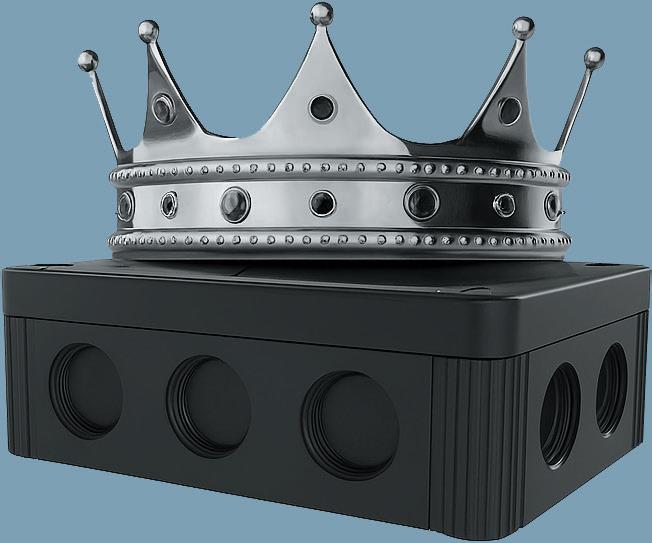
The COMBI 310: Residential & Domestic Product of the Year 2025.
Winner of Electrical Times Residential & Domestic Product of the Year 2025, the WISKA COMBI 310 proves that smart design makes all the difference.
Developed from installer feedback, it combines precision engineering with everyday practicality — delivering IP66/67 protection, three M20 side entries, and 10% more internal space for faster, neater connections.
Built to perform in any environment, from outdoor lighting to renewable installations, the COMBI 310 continues WISKA’s legacy of innovation and reliability — making it the trusted choice for electricians everywhere. COMBI 310. Award-winning by design.








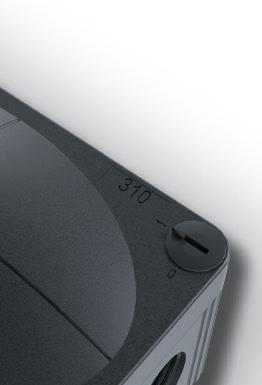







®
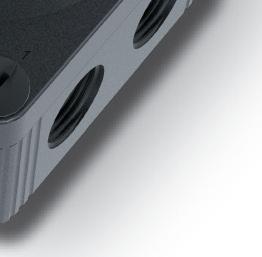


C.K Tools, a leading industry name in professional hand tools, is proud to announce its win for ‘Trade Tool of the Year’ at the Electrical Industry Awards – hosted by the Electrical Times. The brand’s new Redline VDE range, launched in June of this year, was crowned as winner earlier this month at the awards ceremony.
Brinley Buckley-Roberts said of the win: “We’re so pleased to have received this award. Extensive research into comfort, ergonomics and safety informed the development of the new-look pliers and cutters range, which has been re-developed with expert German manufacturing to deliver the best in class, VDE-compliant range. Thank you to all our customers for their valued feedback and to everyone at the Electrical Times for presenting us with such an amazing accolade!’ www.ck-tools.com
We are absolutely thrilled and incredibly proud to announce that Danbro Electrical Services Limited has won Contractor of the Year –Community Involvement at the Electrical Times Awards 2025!

Luceco’s FType Elite downlight has been shaped directly by contractor feedback, focusing on faster, safer and more reliable work on site. Its NEL/NEL piano key terminals and ClipFit System give clear access and quick, secure terminations, while the QuickView Cable Window helps electricians check placement before installation. Compatibility with 500V insulation resistance testing also supports smoother compliance checks. Designed to save time, reduce errors and support easier testing, FType Elite reflects what contractors said they needed most. Its recent Highly Commended recognition at the Electrical Industry Awards reinforces its position as a dependable choice for the trade. Find out more: www.luceco.com/uk/ftype-downlights


This prestigious recognition is thanks to our ongoing commitment to local safety through our annual defibrillator installation program at community football clubs. This year, we were delighted to install a vital defibrillator unit at Berkhamsted FC.
Community safety is a core value at Danbro, and we are dedicated to using our skills to make a real, life-saving difference locally. A huge thank you to the Electrical Times for this honour!
Read more about this initiative and our work: https://www.danbroelectrical. co.uk/blog/from-circuits-to-side-lines-danbro-electrical-services-limiteddonates-defibrillator-to-berkhampsted-fc/ danbroelectrical.co.uk
Highly commended in the Contractor of the YearCommunity Involvement category, C&B Electrical Contractors Ltd delivers specialist electrical services across healthcare and commercial sectors while supporting local charity projects and causes.
Their work with Milton Keynes University Hospital, including electrical upgrades for a specialist trauma theatre and support for its fund-raising charity gala ball, reflects an ongoing commitment to patient care.

The company also provides ongoing support to Bletchley Boxing Club, making a £15,000 donation and sponsoring a party of young boxers’ trip to a tournament in Sweden.
C&B Electrical Contractors Ltd prioritises local employment and apprenticeships, ensuring reliable services and positive long-term outcomes for the wider Milton Keynes community. www.candb-electrical.co.uk
Sidmar Electrical Limited celebrates award win for excellence and community commitment

Sidmar Electrical Limited is a small, reliable company passionate about delivering exceptional electrical services. Based on the North Essex and Suffolk border, Sidmar work in both domestic and commercial, ensuring homes and businesses operate safely and efficiently. Founder Danny Gregory said: "We love what we do and take pride in every project, no matter the size. We have a strong commitment to customer satisfaction we listen and deliver solutions that meet your needs."
With attention to detail and dependable service, Sidmar Electrical combines expertise with a personal touch, building trust and exceeding expectations. This dedication has now been recognised with a prestigious industry award, Electrical Contractor of the Year (Up to 5m) at the Electrical Industry Awards 2025, celebrating Sidmar Electrical’s commitment to customer care, skills development and community involvement.
The judges praised Sidmar as “an excellent entry from a small family business,” highlighting their strong growth, commitment to apprenticeships and the dedication of the family team behind the business. www.sidmarelectrical.com
Thorn
Lighting’s College 2 wins Lighting Product of the Year
Zumtobel is celebrating a major achievement as its newly re-engineered College 2 luminaire has been named Lighting Product of the Year at the Electrical Industry Awards 2025. College 2 has been completely re-imagined to meet the evolving demands of modern educational spaces. Designed and manufactured in Spennymoor, UK, it pairs low-glare, high-quality light with installer-friendly engineering. A patent-pending hinged gear tray allows safe, eye-level wiring and ground-level servicing; a hidden connector enables neat continuous runs. Seven mounting options simplify one-for-one replacements and new layouts alike. With DALI-2 and Bluetooth® control options, presence/daylight sensing, IP44 protection and long life, College 2 supports comfort, compliance and lower energy use across learning spaces. It’s a robust, circular-minded solution that helps schools upgrade quickly. www.zumtobel.co.uk
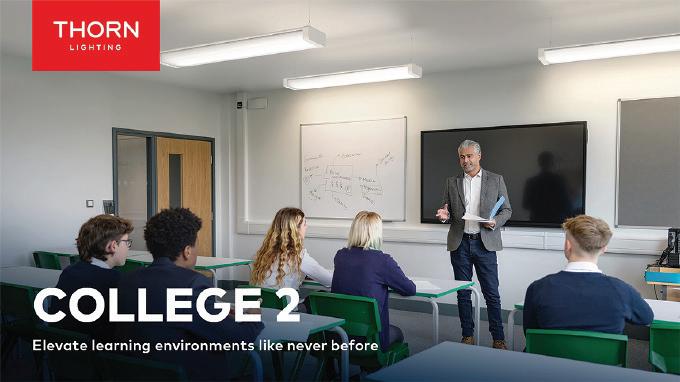
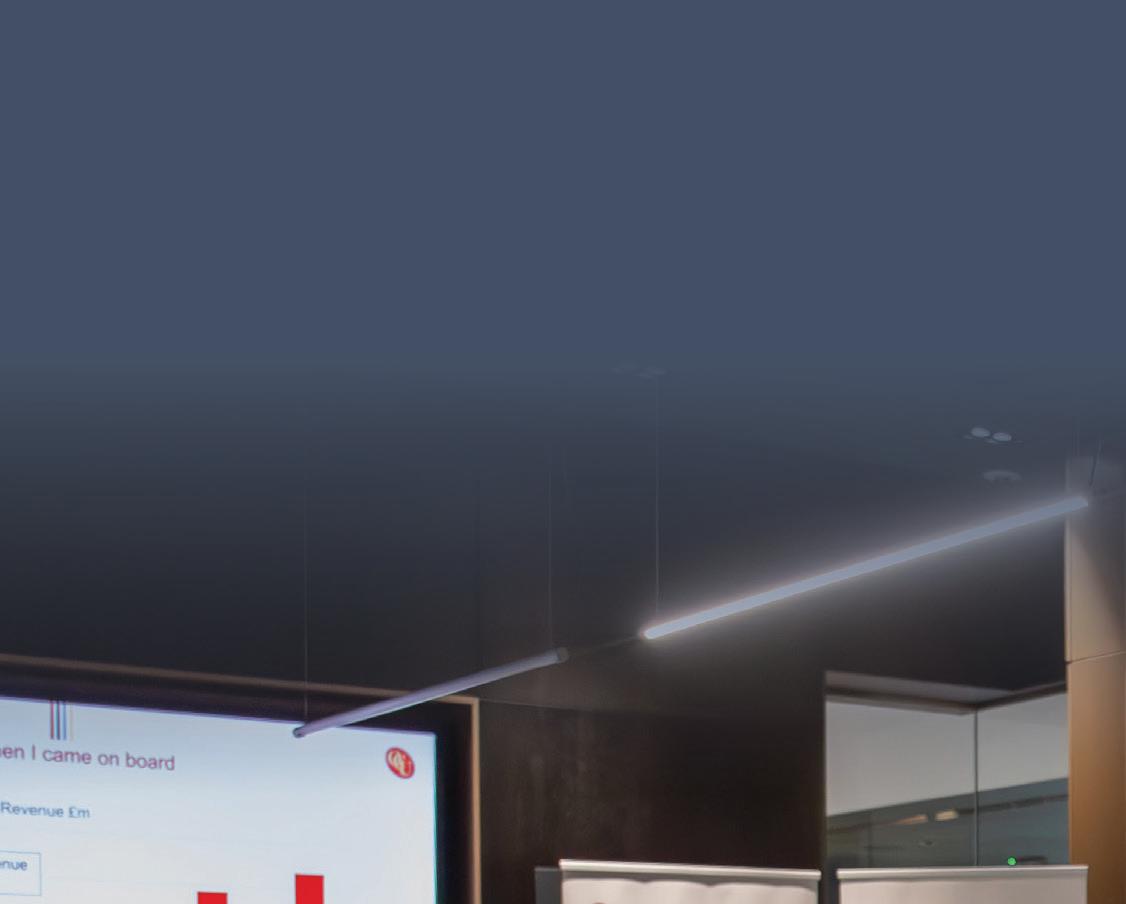










Lincolnshire County Council is working with TRT Lighting on a countywide retrofit programme that’s cutting street lighting energy use by more than 65 per cent. The project upgrades existing lanterns with new LED technology, delivering major carbon and cost savings while extending the lifespan of assets across one of England’s largest rural counties. Spanning one of England’s largest rural counties, Lincolnshire’s street lighting network plays a vital role in connecting communities and keeping roads safe. Rather than replacing entire lanterns, the Council chose to retrofit existing fittings – a decision that reduces waste, lowers costs, and maximises long-term sustainability.
TRT designed and supplied 5,400 bespoke retrofit kits, upgrading lantern models including Arc 80, Iridium, Evolo 2, Sapphire 1 and Sapphire 2. Each retrofit tray was developed and tested at TRT’s LIA-accredited laboratory to ensure compliance with lighting performance, uniformity, and thermal standards.
The retrofit solution allows existing lantern housings to remain in service for a further 10–20 years, significantly reducing embodied carbon and capital expenditure. Installation has also been streamlined, with each retrofit completed in under ten minutes, minimising disruption to road users and local communities.
To date, the retrofit programme, delivered in collaboration with Balfour Beatty has already achieved more than 65 per cent reduction in energy consumption compared with a 2016 baseline, through the introduction of LED technology, dimming, and part-night operation. Nathan Poundall IEng MILP BEng, Principal Engineer – Street Lighting at Lincolnshire County Council, commented: “By reusing existing lantern bodies and introducing advanced LED retrofit technology, we are cutting energy use by over 65% while avoiding unnecessary waste. This project is a clear example of how innovation and partnership can help us reduce carbon emissions, save money, and extend the life of our assets.”
This large-scale retrofit demonstrates how local authorities can modernise public lighting responsibly, combining sustainability and efficiency without the need for full replacement schemes. To find out more about TRT Lighting’s product range please visit, https://www. trtlighting.co.uk/products/

When the Labour Court of Norway and the National Mediator moved into a new office space in central Oslo, Glamox, a world leader in lighting, provided 857 smart luminaires for a renovation that valued both functionality and aesthetics in its design.
The National Mediator of Norway works to solve high-level disputes related to wage negotiations and collective agreements. As such, it frequently brings together representatives from unions and businesses to hash out last-minute deals that directly affect the Norwegian labour market.
After moving into a new office space in Oslo, these tough negotiations will hereafter take place under Glamox-provided luminaires.
The other tenant, the Labour Court of Norway, is a specialist court that considers disputes between parties to collective agreements concerning the existence, interpretation and validity of collective agreements. To meet the needs of the court, the architectural firm IARK, which led the refurbishment, custom-designed a courtroom with an adjoining judge’s quarters, considering functionality, acoustics, and video use. Both offices had a selection of high-quality vintage Norwegian furniture from the 1960s, which was reintegrated into the new office space.
“High-quality, durable materials with a distinctive Scandinavian design language were seamlessly integrated into the overall furniture concept, contributing an added dimension and narrative quality to the space—one that would not have existed otherwise,” says Åsa Forsberg, Interior Architect at IARK. In the end, the lighting enhanced the perceived quality and spatial experience of the large meeting rooms.
CU Phosco, working with M Group Highways on behalf of Gloucestershire County Council, has successfully completed a lighting replacement scheme on Metz Way, Gloucester. The project involved the removal and replacement of high mast structures and installation of LED street lighting to improve safety, reduce maintenance demands, and support local connectivity on one of the city’s busiest distributor roads.
Metz Way is a vital part of Gloucester’s transport infrastructure, linking residential areas like Abbeymead and Abbeydale to the city centre and playing a central role in the local economy. The route includes key junctions such as Eastern Avenue and provides access to major developments and commuter corridors, including bridges over railway lines.
As part of ongoing routine maintenance, five high masts were identified as nearing the end of their operational life and requiring

replacement. Gloucestershire County Council carried out a desktop study to determine the best way forward, concluding that a combination of new high mast lighting and LED street lanterns would provide optimal coverage, particularly in areas where traditional columns were unsuitable due to Network Rail access constraints.
M Group Highways, the council’s maintenance contractor, successfully tendered for the works with a specification that included CU Phosco products. Having worked closely with M Group Highways for several years on mast maintenance across the county, CU Phosco was well placed to support this project through design, manufacture and installation. tial future use
Jack Benham, Project Manager at M Group Highways, commented: “Metz Way is a key artery into Gloucester, and this scheme needed to be delivered quickly and with minimal disruption. Working with CU Phosco, we were able to provide Gloucestershire County Council with a robust, energy-efficient lighting solution. Their high mast expertise and ability to deliver on challenging access requirements were instrumental to the success of this project.”
For further information, visit: www.cuphosco. com/products/category/high-mast-lighting
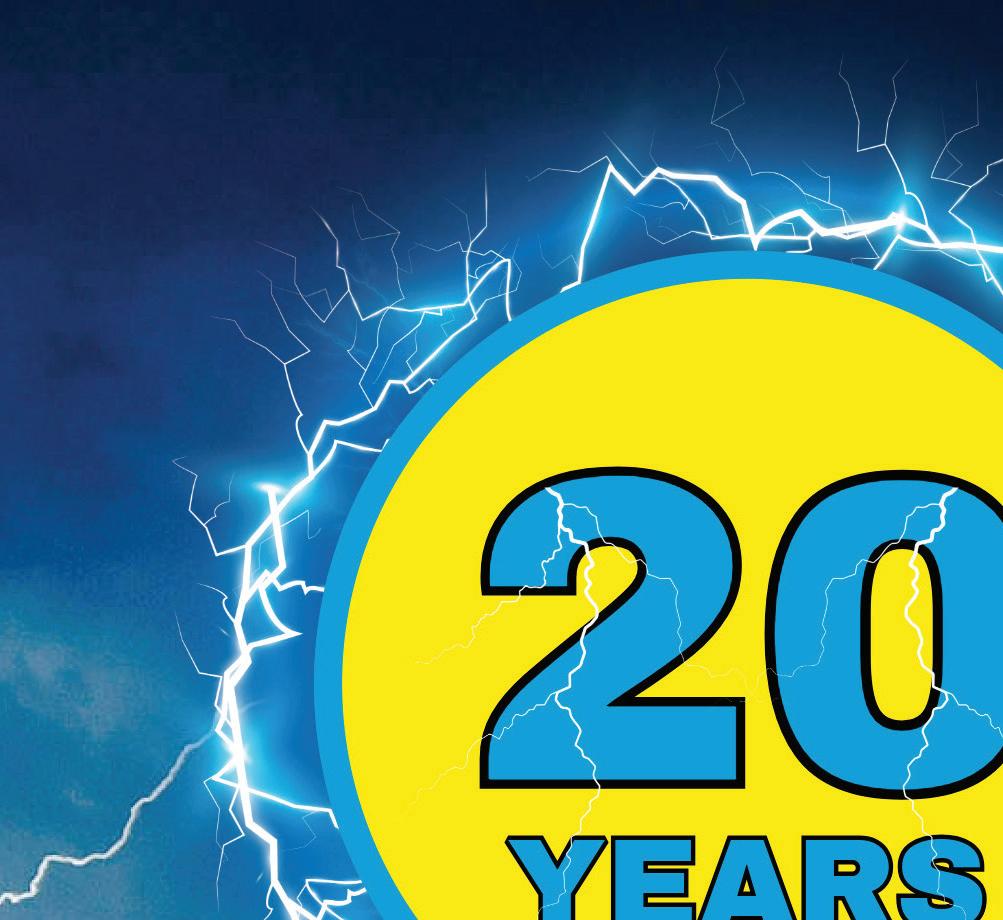




IN ASSOCIATION WITH:

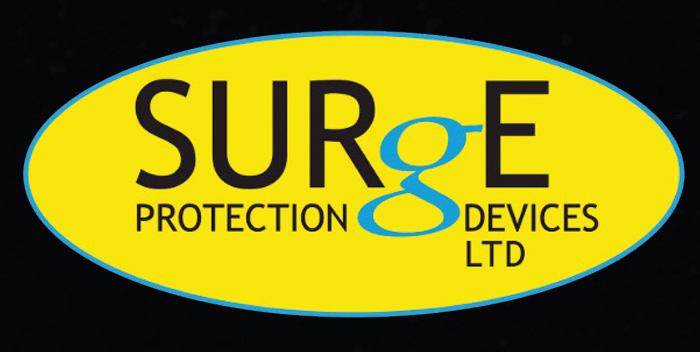

20 years of protecting your vital electrical systems

Every year, the Top 50 Electrical Contractors report gives us a snapshot of where the industry is heading, and this year’s list tells a story of a sector that is anything but static. Growth, change, and a fair bit of reshuffling define the 2025 results, with several contractors making big leaps thanks to acquisitions, expanding workloads, and the continued boom in data centres and energy-related projects.
One of the standout themes this year is momentum. Even though the top 50 as a whole delivered steady turnover growth, the top of the table saw dramatic movement, with a handful of companies posting especially strong results. Acquisitions played a noticeable role here, bringing new opportunities and sizeable project backlogs into the mix. Profitability has also improved across much of the list. More businesses returned positive figures this year, and many saw stronger profit growth than we’ve typically seen in recent editions of

LISA PEAKE EDITOR, ELECTRICAL TIMES
the report. It’s a reminder that, even in a market shaped by shifting regulations and economic pressure, contractors are still finding ways to strengthen their positions.
We also saw higher profit per employee and improved return on sales among the top performers, hinting at greater efficiency and a more confident sector overall. With office construction gaining pace again and continued demand from energy, housing, and data infrastructure, the outlook remains upbeat. There’s a sense that the industry is adjusting well to new legislation, new expectations, and the changing shape of the built environment.
As always, this year’s Top 50 highlights not only the numbers but the wider direction of travel. The electrical contracting sector continues to show resilience, adaptability, and an ability to make the most of the opportunities in front of it — and that’s reflected clearly in the pages that follow.



Halsall Electrical Limited have hit the top highest profit growth for this year showing a remarkable 2,618 per cent increase in profit, a surprising recovery since last year’s profit loss. Dalkia Operation Limited with a profit growth of 318 per cent and DMG Engineering Limited with 283 per cent, are in second and third place respectively. This growth may be related to their involvement in the emerging energy sector. Compared to last year, where only 10 companies showed 50 per cent growth, this year, 16 companies show profit growth, with a combined average of 145 per cent (excluding the first-place contender as it is an outlier on this data). There is a comparative higher number of companies achieving a
with
Keeping your electrical systems and essential technology safe is what we’re all about. At Surge Protection Devices Ltd, we’re proud to be the UK’s go-to team for lightning and surge protection. With almost twenty years under our belts, we’ve solved all kinds of tricky problems, and in the past seven years, our experience matters more than ever, especially since the UK’s BS7671 wiring rules started calling for extra surge protection in our installations.

You will fi nd our surge protection devices just about everywhere— military bases, historic landmarks, factories, and family homes. These devices are built to protect your electrical setup from sudden surges and lightning strikes. Nowadays, with everything from smart fridges to smart phones running on sensitive electronics, reliable surge protection is critical for keeping electrical installations safe and running smoothly.
All about safety
We’re not just about making and selling products—we care about the safety and reliability of the entire electrical industry. Our Technical Director, Kirsty Johnson MIET, brings her expertise to the British Standards Wiring Regulations committee, focusing on lightning and surge protection. We are dedicated to making sure our industry sticks to the highest safety standards, which is why we were thrilled to be announced as the Innovation & Excellence Awards – Electrical Safety Specialists of the Year 2025!
We love helping everyone in the electrical fi eld get better at what they do. That is why we don’t just offer top-quality surge protection devices—we also give away free, indepth CPD training. Whether you’re part of a big-name consultancy or you’re just starting out as an apprentice, we’re here to share valuable technical know-how with you, explained in a way that makes surge protection easy to understand and easy to apply to your electrical installation, no matter how complicated the infrastructure may seem.
The electrical world is always changing and absolutely crucial, with safety always in the spotlight. As top-notch electrical design becomes more important for every kind of infrastructure, and as we work towards Net Zero goals in renewables, Surge Protection Devices Ltd is here to help. We’re not just delivering great products—we’re here with outstanding support and expertise, pushing safety standards higher for everyone.
What’s next?
Here at Surge Protection Devices, we are entering in to our 20th year in business in 2026, which is a massive milestone. As such, you will see us out and about celebrating with the electrical industry that has helped us grow. If you see any of the team out in 2026, please come and say hello!
If we can be of any help with any aspect of surge protection, feel free to get in touch via info@surgedevices.co.uk or 01484 851 747.
The Top 50 Electrical Contractors is analysed each year using a previously agreed pool of 60 contractors, to allow annual comparisons. This list is updated periodically to allow for new entrants into the data set.
Providing an overview of the performance of the market in this context is challenging, as the table includes different annual reporting periods and, in some cases, covers activities other than electrical contracting.
The recent analysis of turnover, profi t growth, profi t per employee, and return on sales within the electrical contracting sector shows significant advancements and shifts in performance refl ective of mergers and acquisitions reported recently for those same companies.
Turnover growth reached an impressive average of 77 per cent among the top
10 companies, with the highest performer showing a remarkable increase of 183 per cent, an average that should be carefully appraised as it is the likely result of acquisition of the number one ranker by an American company, who has a heavy backlog or projects (among them data centres) and plans for expansion. The overall top 50 companies maintained an 18 per cent average turnover growth. This growth balance indicates consistent opportunities within the market. Further supporting this optimistic scenario, profi t per employee across the top 50 companies averaged at 16 per cent, with fewer companies reporting negative figures since last year. The return on sales also highlighted strong performance, with the average for the top 10 being 11.16 per cent, alongside a corresponding increase among the top 50.
Lastly, more than just the shifts in rank, the top 35 profi t rank averaged £6,932 million, an increase in last year and one more factor to encourage further investment in the sector.
The continued effects of office construction gaining momentum along with key sectors such as energy and data warehouses severely contributing to growth in the sector have influenced this year’s observed results. The market is estimated to continue to grow from 2025 to 2026 largely due to the pressures coming from new legislation regarding safety standards requiring remodelling of existing buildings and the government mandate for new house building.
The sector’s resilience and adaptability in face of recent challenges underscores a promising outlook for the coming years.




By this point, I should imagine that you are quite familiar with the term SPD (surge protection device) but there are still so many questions surrounding the use and application of surge protection devices, below details an introduction to what type of device is needed and when surge protection is required under BS7671.
What to install
There are three types of SPDs depending on what you want to protect.
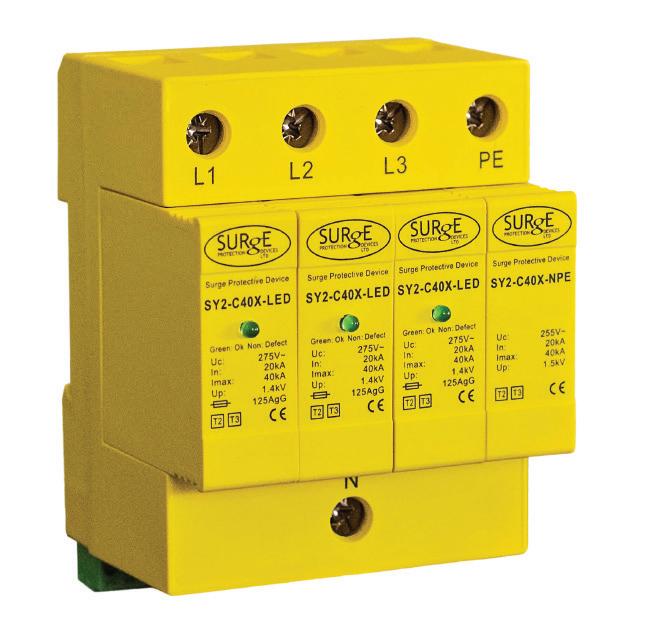
If you are looking to protect a distribution board or consumer unit, it will be a type 1 or type 2 SPD. If you wanted to protect a specific piece of equipment, such as a fuse spur or single socket, it would be a type 3.
A Type 1 device would only be required where there is an external lightning protection system or the installation has an overhead supply
For all other circumstances, a type 2 device will be sufficient to provide adequate protection for distribution boards.
Where protection against overvoltages is required for specific equipment, a type 3 device may be used to provide protection.
When are SPDs required
Protection against transient overvoltages shall be provided where the consequence caused by overvoltage could:
i. Result in serious injury to, or loss of life
ii. Deleted by Corrigendum May 2023
iii. Result in significant financial loss or data loss
For all other cases, SPDs shall be fitted to protect against transient overvoltages, unless the installation’s owner declines such protection



Dornan Engineering Services Limited has had an outstanding turnover this year showing a turnover growth of 183 per cent, a likely result of its acquisition by an American construction company. Among the top 10 companies, the average turnover growth reached 77 per cent. This average might be slightly inflated by our first place taker as growth from 4th to 10th place only ranges between 80 per cent to 37 per cent. But still, a great reflection of rising opportunities within this sector as the overall average for the top 50 this year has maintained a similar score to last year (18 per cent growth).

and wishes to accept the risk of damage to both wiring and equipment as tolerable.
The requirement to install SPDs where the consequences could result in serious injury to, or loss of human life is the most onerous requirement. This will mean that any distribution board supplying electrical equipment that is installed to protect life or prevent injury will require an SPD.
Indent three is similar to the previous requirement where an SPD should be installed where commercial or industrial activity could be interrupted, the requirement now is that an SPD shall be provided where the consequence caused by overvoltage could result in significant financial or data loss.
The basic position of section 443 is now that SPDs shall be installed. In practical terms, most installations will have distribution boards that require surge protection due to the indents above, so it would only be distribution boards that did not require surge protection, as no circuits outlined in regulation 443.4.1 were

present. Then a discussion is encouraged between the electrical designer and the client to ensure that no unacceptable losses occur from overvoltage, while also considering the requirements to protect against switching overvoltages from regulation 443.4.2.
Something important to remember is that if the building has an external lightning protection system, then the requirements of BS EN 62305 apply, which means that a Type 1 SPD is a requirement in these cases and BS 7671 do not apply. Where the building has an external lightning protection system, a Type 1 SPD will be required on the main incomer and any distribution boards supplying external circuits.
I hope this article has provided some guidance on the requirements from BS 7671:2018, if you have any further questions, please do not hesitate to get in touch.
If you wish to discuss this topic further, or want to know more about the use of SPD’s, contact the surge protection experts on 01484 851747, or email us at info@surgedevices.co.uk.



This year, AVK/SEG (UK) Limited is leading on profit per employee showing a £125k, further reinforcing their performance on other categories. Halsall Electrical Limited with 87 per cent and Halsion Limited with 52 per cent follow up in second and third respectively. The top 10 electrical contractors averaged approximately 49 per cent profit (including the first place contender) showing an increase since last year’s figures and a positive outlook for the sector. Among the top 50 companies, the average profit per employee stands at 16
marking an
and a
trend compared to last year, as fewer companies are reporting negative profit per employee.

The number of solar PV installations is on the rise, but one of the aspects of PV system design that is often overlooked is surge protection. BS7671:2018 section 443.4, which gives the requirements for when surge protection shall be installed, covers both AC and DC installations, this is something that is often not considered when we consider where surge protection is required. In section seven for special locations, we also have regulation 712.443.101 states that where protection against transient overvoltage is required by section 443, such protection shall also be applied to the DC side of the PV installation. So, if the solar installation as on the roof of a building where the regulations in section 443 require SPD’s to be installed, SPDs also need to be installed on the DC side of the installation to protect the inverter.
Some inverters state that they include overvoltage protection. For an incorporated SPD to fulfil the requirements of the wiring regulations, the manufacturer must specify that it is installed on the DC side of the inverter, as this ensures that it is providing protection on the correct side of the inverter. There are quite a few inverters on the market
which say they have overvoltage protection included, when in actual fact, it is only providing protection on the AC side of the system. It must also state the type of SPD, the reason it is important for the type of SPD to be mentioned is that once a device is specified as a type it must conform to the product standard BS EN 61643-31 as some manufacturers incorporate individual varistors, which are not considered to be a complete surge protection device. If you are unsure and want to check the technical credibility of an inverter, I would advise you to request a certificate of conformity, which will list the standards that the equipment conforms to.
Another consideration is that the inverter will only ever include a Type 2 surge protection device, so if the building has an external lightning protection system, the installation will always require the use of external Type 1 SPDs to conform to BS EN 62305, as the cables will cross between the lightning protection zones.
When a PV system is installed on a building with an external lightning protection system (LPS) the PV system should be separated from all parts of the LPS in accordance with BS EN 62305-3. This is referred



1
The average return on sales across the top 10 is 11.16 per cent and across the top 50 contractors is 4.33 per cent, an increase versus last year. The top three performers show a return on sales of 18,67 per cent (Premier Electrics Limited), 17,61 per cent (Halsall Electrical Limited) and 11.44 per cent (Wingate Electrical Plc) DMG Engineering Limited and Quartzelec Ltd are two noteworthy entrants as they rise to notoriety versus last year with a 10.34
and 10.30 per
return on sales respectively. This year is filled with new
and is
by
by
and some mergers and acquisitions.
to as the separation distance. This distance must be adhered to between the LPS and any metal work to ensure that no dangerous arcing can occur. If the separation distance is not met, then the metal work must be bonded to the LPS, therefore becoming part of the lightning protection system. More information on separation distances can be found in BS EN 62305, but it is important to note that the separation distance depends on different parts of the lightning protection risk assessment carried out for each individual building, and therefore will be included in the LPS paperwork, if available. This calculation should only be carried out by someone with experience in the lightning protection field. If the separation distance is not met and therefore the PV system has become part of the LPS then the SPD required will need to be a Type 1, as mentioned above, this will always be external from the inverter.

DC side of a solar PV installation should be used. This is due to the continual loading and higher voltages of PV systems. The devices designed for the use on the DC side of PV systems are clearly marked with the PV symbol, as per the requirements in BS EN 61643-31. Also, they look slightly different, with the live and neutral terminals being replaced by a positive and negative terminal.
Selection of a PV SPD is quite simple. From the above, you should know what type of SPD you need. The only other information needed is the operating capacity of the inverter, which is usually 600V or 1,000V. There are some specialist systems which are different, and there are devices available for those too, but for simplicity we will stick with the 600V & 1,000V options. That gives four options of devices.
From experience, there are not many installations that correctly conform to these separation distances, so as a general rule, if the building has an LPS a Type 1 SPD should be installed on the DC side of the installation. For all other PV systems, a Type 2 SPD will provide adequate protection.
Although the SPDs are still defined as Type 1 and Type 2 devices, they are different to the SPDs we see used on the AC electrical systems and only SPDs that are designed for the specific use on the
Now we have the correct device selected, we can move on to installation. As with our AC SPDs, our DC SPDs are installed in parallel with the string. Usually a DC isolator would be used. DC SPDs should be installed one per string to provide protection, although in some situations it may be possible to protect multiple strings with one SPD, depending on the installation design.
For more information, call 01484 851747, or email us at info@ surgedevices.co.uk.



AVK/SEG (UK) Limited is a top ranker once more on general profit rank, occupying the first place with £23,891 million in profit Emcor Group (UK) Plc occupies second place with £21,054 million in profit, falling from first place since last year, and it is followed by NG Bailey Group Limited in third place with £17,700 million in profit. The average pre-tax profit for the top 35 companies this year is approximately £6,932, reflecting an increase from last year and indicating ongoing sequential growth following a rise in the previous year as well.
NG Bailey Group Limited
Dalkia Group Limited
SES (Engineering Services) Limited
Emcor Group (UK) Plc
AVK/SEG (UK) Limited
Phoenix Me Limited
Integral Uk Limited
Dodd Group Limited
Skanska Rashleigh Weatherfoil Limited
Atalian Servest Amk Limited
Gratte Brothers Limited
Dornan Engineering Services Limited
Enerveo Limited
Essex Services Group Limited
CBES Limited
Systems adi Group Limited
FES Ltd
Dalkia Operations Limited
Equans FM Limited
Lorne Stewart Plc
John Turner Construction Group Ltd
The Barnes Group Limited
Tilbury Douglas Engineering Limited
P.I.P. Electrics Limited
Quartzelec Ltd
EJ Parker Technical Services
Derry Building Services Limited
Carter Synergy Limited
Halsion Limited
Mace Construct Specialist Services Limited
Bancroft Limited
Clarkson Evans Limited
Wingate Electrical Plc
Stothers (M. & E.) Limited
LJJ Ltd





Glamox, a global leader in lighting, has received the Supplier of the Year 2025 award from Norwegian Energy Partners (NORWEP), a non-commercial organisation supported by the Norwegian government and the energy industry. The award was presented yesterday by Terje Aasland, the Norwegian Energy Minister, at the International Energy Forum Summit on 19 November. Receiving the award on behalf of Glamox were Astrid Simonsen Joos, Group CEO of Glamox, and Tommy Stranden, Chief Sales & Commercial Officer of Glamox’s Marine, Offshore & Wind division.
Glamox’s Marine, Offshore & Wind division exports lighting systems worldwide for offshore energy platforms, wind farms, and construction and support vessels. Its lighting enhances safety, lowers emissions, and supports digital operations in challenging environments. Glamox has a global presence and major production and technology facilities in Møre and Romsdal. The other finalists for Supplier of the Year were: Framo, NOV APL, Scanmudring and ULSTEIN.
Astrid Simonsen Joos, Group CEO of Glamox, says, “We are absolutely thrilled to be recognised by NORWEP and the energy industry. This award is down to our Glamox teams across the world. Their hard work and dedication made it possible.
“Today, there is a growing shift towards the autonomous operation of offshore oil, gas, and renewable energy platforms. Glamox is at the forefront of supplying them with highly reliable smart marine lighting systems for their safe operation, and we are delighted to be flying the flag for Norway worldwide.”
In September 2025, Glamox announced that it was supplying 38,000 lights, along with advanced systems to control, test, and monitor them, for 11 offshore High Voltage Direct Current (HVDC) converter platforms being built for TenneT, a leading European grid operator, as part of its 2GW Program. In November 2024, Glamox announced it was supplying 4,000 connected marine lights for remotely operated oil and gas production platforms in the Yggdrasil region.

For Mouse Tail Coffee’s new London location, the brief was to craft a welcoming atmosphere that felt like a warm hug, where commuters and colleagues could meet on busy city days. Fenchurch Avenue is the fifth location for the brand, and therefore the design needed to emulate their existing identity while adding a creative flair and bold lighting that seamlessly mirrored the curved architectural details of the building.
Light Forms worked closely with the Interior Designers Inside Job Studio to create a bespoke lighting feature which acts as a focal point for the space, suspended above the main counter. This was achieved using Light Forms’ Moonband 90 profile with curves, which delivers striking illumination and dynamic lighting effects, finished in a timber veneer to meet the aesthetics of the overall design.
A range of Light Forms fixtures were used to complete the project, including Nova 62 track spotlights mounted onto Powergear track. The Nova track spot features a classic, minimal design with integral driver, complemented by the Powergear lighting track system which is ideal for more subtle finishes where the lighting is the main effect.
The new space features stunning floor-to-ceiling windows, a spacious bar, and an array of seating for customers to enjoy freshly baked goods and Mouse Tail’s signature coffee. The welcoming interiors and dynamic lighting make this a standout spot in the district, providing a haven from the hustle of the city streets to unwind and connect.
Mirjam Haggi, Interior Designer at Inside Job Studio, said: “We had a wonderful time collaborating with Light Forms on the design for Mouse Tail Coffee’s City of London location. The solutions from Light Forms align perfectly with our overall vision for the interiors, with curved, creative lighting which harmoniously follows the shape of the building and highlights the seating for customers to unwind and enjoy.”
An intelligent wireless lighting solution for the Harris Academy Sixth Form

Tridonic UK is pleased to have contributed to the successful completion of a major lighting installation at Harris Academy’s newest sixth form building, delivered in partnership with Marlow Integrated Designs (MID). The project showcases how smart, wireless lighting control can support both exceptional learning environments and ambitious sustainability goals.
Harris Academy, part of the highly respected Harris Federation, is known for its commitment to educational excellence and its strong track record in improving outcomes for young people across London and Essex. For its new sixth form site, the Federation sought a lighting system that would deliver high performance, adaptability and energy efficiency, while supporting its wider aims to reduce environmental impact and achieve BREEAM accreditation.
To meet this requirement, Tridonic worked closely with MID to deliver a comprehensive package of solutions centred around its innovative Basic DIM Wireless system. With Casambi-ready components, the system enables seamless wireless control, allowing luminaires to adjust dynamically in response to occupancy and natural daylight levels. The BasicDim Wireless Sensor provides integrated presence detection and ambient light measurement, ensuring lighting is only used when required.
Tridonic also supplied high-quality linear modules and drivers designed to provide uniform, glare-free illumination across learning spaces. With driver efficiencies reaching up to 94 per cent, the solution supports the Academy’s drive to minimise energy use and reduce long-term carbon emissions.
MID designed and supplied a complete scheme featuring SPACE-2X lighting rafts integrated with Tridonic’s wireless controls and PIR detectors. Each seven-metre raft requires only four fixings, simplifying installation. Classroom luminaires were specified with micro-prismatic diffusers and daylight harvesting modules, all commissioned via the wireless app to dim automatically when ample daylight is available. This ensures optimal visual comfort while avoiding unnecessary energy consumption.
With this installation, Tridonic UK has helped deliver a modern, connected and energy-efficient sixth form facility that enhances learning, reduces environmental impact and supports the Harris Federation’s drive for outstanding educational spaces. The project stands as a strong example of intelligent lighting technology delivering meaningful benefits for both its occupants and the wider community.
As demand for electrical contracting grows, the industry continues to face major challenges. Rising costs, stretched teams and complex new regulations are reshaping the landscape, particularly for those working with social landlords. Recent measures, including the Social Housing (Regulation) Act, Awaab’s Law and Tenant Satisfaction Measures (TSMs), are increasing accountability and aligning social landlords with the private sector. These include mandatory five-year electrical inspections and providing tenants with an Electrical Installation Condition Report (EICR) within 28 days of inspection or before moving in.
Falling short
Using manual, paper-based processes to monitor and manage building compliance across potentially hundreds of properties is not only time consuming but prone to error. Similarly, using multiple or outdated IT platforms can be counterproductive, making it more difficult to keep track of compliance and the status of inspections.
When scheduling servicing appointments, ineffective systems can mean engineers are assigned to jobs that don’t align with their skillsets, or they are not fully prepared for, risking delays, repeat visits, or incomplete repairs. In some cases, engineers must travel long distances between appointments, driving up costs and reducing overall productivity. Missed appointments and no-access visits add to the challenges.
The only way is up
In such a challenging operating environment, cloud-based software has a critical role to play in driving efficiency and helping contractors to meet regulatory demands.
Delivered via a Software as a Service (SaaS) model, this technology is accessed online rather than installed on a computer or server. This enables the software to be cost-effectively implemented and requires no specialist IT skills to operate. The SaaS provider manages the infrastructure, security and updates, and can easily add new functionality when needed.
A step ahead
Cloud-based software is continually evolving in response to industry and regulatory change. Recent advances include the introduction of ‘intelligent’ scheduling enabling thousands of servicing appointments to be booked in bulk, up to three months in advance and within seconds. Visits for both planned maintenance
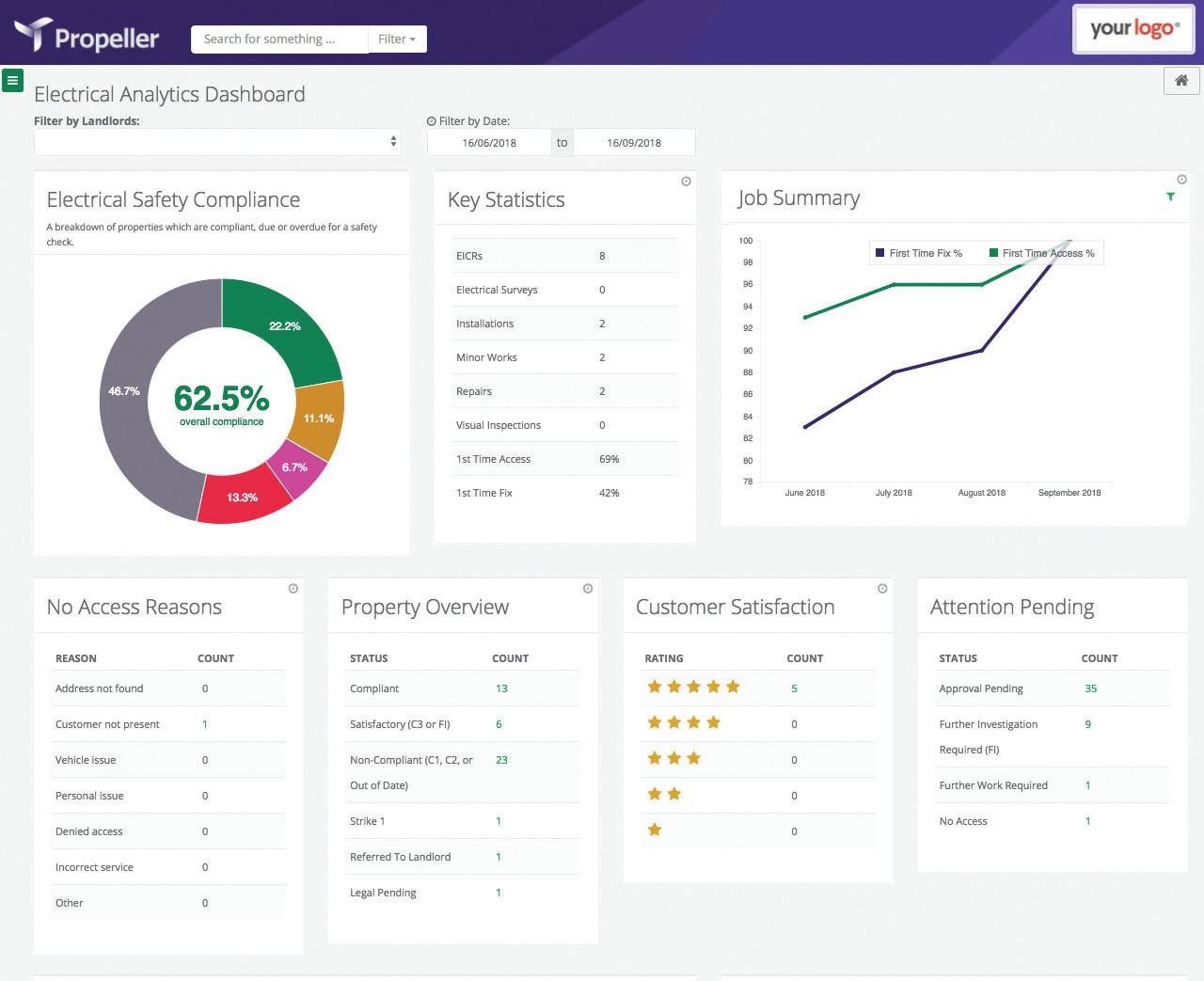
By Dave Carr, Managing Director at Propeller
and responsive repairs can also be automated. Artificial intelligence (AI) enhances engineers’ productivity by continuously analysing the workforce to optimise workloads. Appointments are allocated based on factors such as skillsets, travel time, and the job’s estimated duration.
Over time, the system self learns from this data to further enhance efficiency and increase first-time fix rates.
Compared to conventional scheduling methods, this approach can reduce operational costs by up to 40 per cent and has the potential to cut travel costs by up to 25 per cent, lowering carbon emissions through more efficient routing.
To ease compliance management, cloud-based software provides a single platform containing all the required documentation for each property, including photographs, materials and costings. On site, engineers can instantly access key information such as details of previous repairs and appliance conditions. This data can be viewed via a mobile app and updated in real time. Gas and electrical certificates can also be validated on-site, further improving efficiency.
In response to regulatory change, new functionality has been introduced to
automatically send compliance-related certifications and letters to customers in bulk by post. This fully integrated service also means letters and documents can be tracked and evidenced as required.
Cloud-based software helps contractors to improve reporting, communication, and customer satisfaction too. Appointment details can be automatically sent to customers, and additional functionality added to manage no-access scenarios and automate follow-on visits. Two-way messaging via SMS or WhatsApp keeps customers informed and allows them to easily reschedule, reducing missed appointments and improving engagement.
All data is consolidated into a central analytics dashboard. This provides real-time visibility across key metrics including compliance status, engineer performance, no-access reasons, and customer satisfaction scores.
Raising the bar
Rising regulatory demands and operational pressures mean contractors must work more efficiently. Modern cloud-based software offers a single, integrated platform to streamline compliance, boost productivity, cut costs and enhance service delivery.








































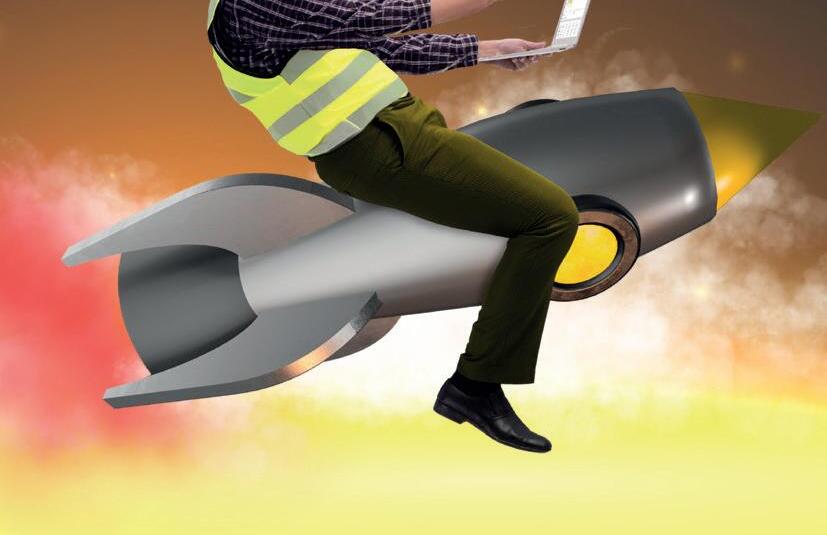











After expanding beyond manual systems, CTS needed a smarter way to manage scheduling, quoting and job information. Managing Director Ceri Crannis explains how Simpro has centralised operations, increased efficiency and positioned the business for sustainable growth
Started in 2011 as a man in a van operation, CTS has come a long way since the beginning of the 2010s. Managing Director Ceri Crannis remembers the early days well, as she and her husband successfully grew the electrical business past its infancy and started taking on staff. With a strong client base and no shortage of renown for their honesty, integrity and specialty in inspection and testing, they did very well for themselves. Ceri took over when her husband Darren left the company to become a Technical Manager at ECA, continuing CTS’ legacy and committing fully to her passion for the electrical industry. Now, the business employs a variable workforce of up to three staff and five subcontractors, a sizable team who share Ceri’s vision for electrical excellence.
Electrical contracting
CTS operates like you’d expect an electrical contracting business to, with multiple technicians on the road providing electrical services and an office team supporting these efforts back home. Across industrial, education and commercial clients, the team specialises in inspection, testing and condition reports and has the workforce capable of taking on any work that comes their way.
Starting with Simpro: unmanageable schedules and markups
Like many successful trade businesses, CTS reached a point where operating using manual methods could no longer facilitate the kind of growth the business was chasing. The two main pain points they experienced were familiar to the trades: trouble managing schedules for an ever-expanding workforce and issues factoring markups into quoting. These challenges caused CTS a lot of operational friction, with Ceri spending excessive time acting as the conduit that kept the entire business running..
How Simpro changed things, faster and better
It would be an understatement to say that Simpro has merely improved how CTS does business. Ceri herself confirms that she “Couldn’t put a price on it”, with the software bolstering both her operations and her confidence as an operator. After some initial anxiety about investing in an entirely new system, she decided to commit.
Today, Ceri says that Simpro has “Without a shadow of a doubt” solved the problems the


business was experiencing, with the software acting as a “One-stop shop for the activities necessary to help the business operate”. Quotes are faster, with a built-in price list that the team easily updates yearly to account for material fluctuations. Invoicing jobs out is also quicker and smoother than ever before, with everyone able to access the information they need for the job easily through Simpro’s ability to sync between every enabled device simultaneously.
The business isn’t the only one benefiting from Simpro, either. Cleanly designed digital invoices are now the standard for CTS, leading to faster customer payments and showcasing that clients love the speed and quality of the service they’re getting.
All in all, it’s a story of complete success between CTS and Simpro, and Ceri is thrilled with the resulting efficiency, saying, “By
centralising our operations in one platform, we can efficiently track our jobs, allocate resources and communicate with our team and clients in real-time.” That’s a glowing review, and with everything running so smoothly, it’s easy to see why Ceri and the team aren’t shy in saying, “We rely onSimpro.”
Where to next: customer groups and business tracking
Now that Ceri has applied Simpro’s software to CTS’ everyday operations, she’s decided that the next step is to start improving lead acquisition. With dedicated Customer Groups set up in the software, the business can track where its new leads are coming from and how much revenue specific groups of customers are generating for the business. Simpro excels at facilitating this kind of forward-thinking planning and development, and when combined with a business like CTS, the sky’s the limit.
As for whether Ceri recommends Simpro, her advice to any trade business owner experiencing similar challenges to hers is “Do it! Do it now, and don’t look back!”CTS hasn’t looked back since embarking on its Simpro journey, and why should they when there’s so much to enjoy on the horizon?
“By centralising our operations in one platform, we can efficiently track our jobs, allocate resources and communicate with our team and clients in real-time.“
























Having the right personal protection isn’t just good practice, it’s common sense. Darren Binns, National Sales Manager at Jefferson Tools, looks at how modern PPE is helping electricians stay safe and focused on the job
sk most people what makes electrical work dangerous and they’ll say “electric shocks.”
True enough, but the hazards go much further. From airborne dust and noise to cramped conditions and fatigue, electricians deal with challenges that can’t always be seen, and that’s where good PPE earns its keep.
“The best safety gear is the kind you don’t have to think about,” says Darren Binns, National Sales Manager at Jefferson Tools. “If it fits properly, feels comfortable and lets you get on with the job, then you’ll use it as second nature, not because you’ve been told to.”
That’s why today’s PPE is evolving fast. Lighter materials, better fitting designs and more breathable fabrics are making protection something electricians can wear all day.
Protecting the eyes should be second nature on any job involving cutting, drilling or working overhead. Modern safety glasses are designed to give full coverage while staying lightweight and fog-free: a big change from the heavy, uncomfortable styles of old.
Jefferson Tools’ nylon-frame safety glasses, for example, combine low-energy impact resistance with a clear lens and adjustable arms for a close, comfortable fit. They meet all the right standards but, just as importantly, don’t distract from the task at hand.
“Good eyewear helps keep focus,” says Binns. “Electricians spend a lot of time in low light or working with small components – anything that protects the eyes without affecting vision makes a big difference.”
Dust and fumes are among the most underestimated hazards on site. From insulation fibres to drilling dust and solder smoke, the air can often be worse than it looks. High-grade respirators such as FFP3 masks filter out 99 per cent of airborne particles, while a built-in valve helps keep breathing easy during longer shifts.
“Respiratory protection has come a long way,” says Binns. “A comfortable, well-sealed mask reduces fatigue and stops that hot, stuffy feeling that used to put people off wearing them.”
Hands that do the work
Education is just as vital for those responsible Electrical work relies on dexterity, so gloves
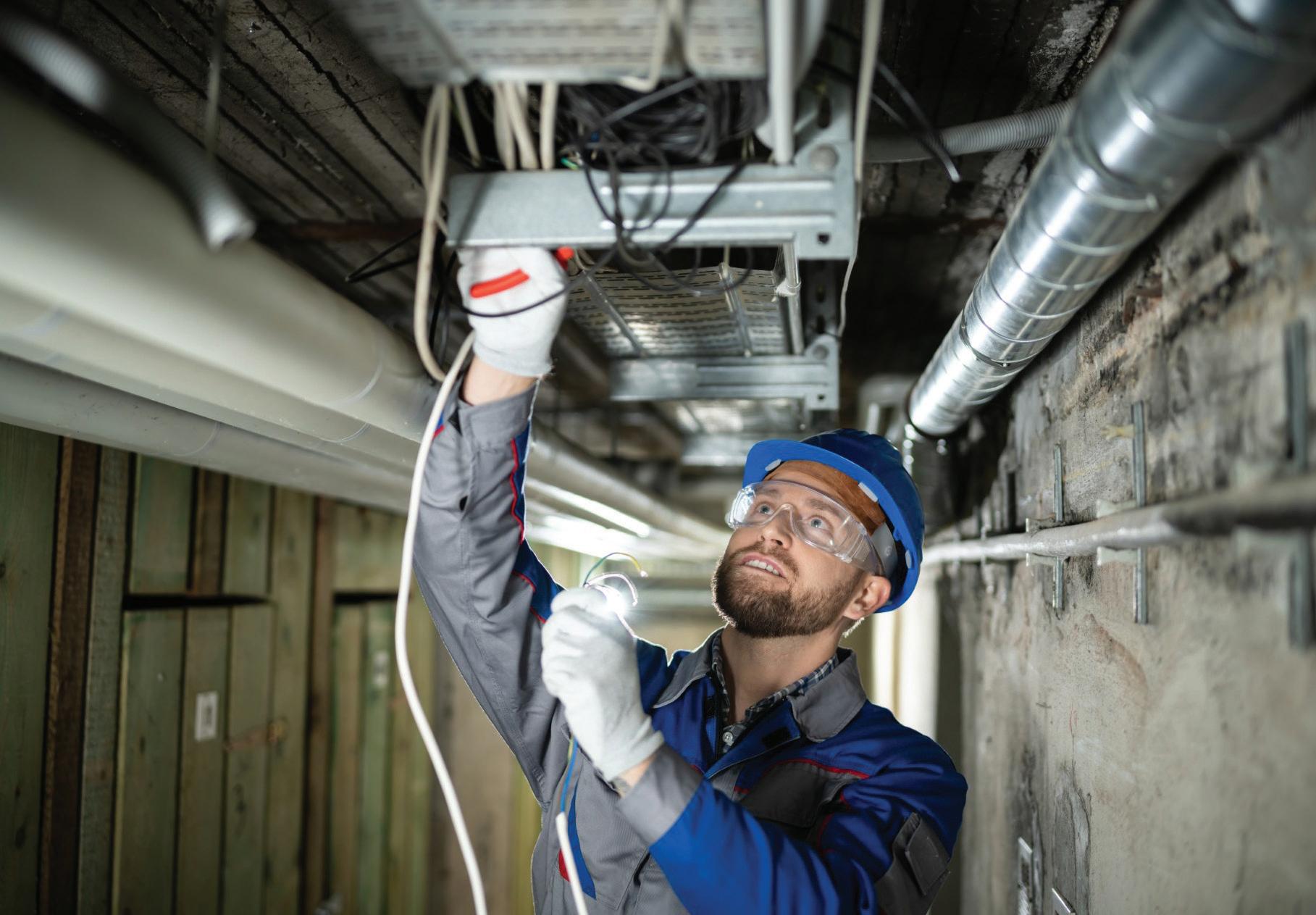
need to protect without getting in the way. Latex-free nitrile gloves are a popular choice for their strength, chemical resistance and flexibility.
Jefferson Tools’ Gecko Grip gloves, for instance, combine a snug fit with a textured surface that holds firm even when handling cables or tools in damp or greasy conditions.
“Fit is everything,” Binns notes. “Too loose and you lose control; too tight and you lose circulation. The right glove should move naturally with your hand.”
For certain jobs, especially cutting or grinding, full-face protection is the safest bet. Clear visors certified to EN166 standards shield the face from debris and splashes while allowing good visibility. Adjustable headbands and quick-change clips make them easy to wear and maintain, encouraging consistent use.
At the other end of the body, fatigue is an often-overlooked risk. Long hours standing on hard floors can lead to back pain and loss of concentration. Anti-fatigue rubber mats are a simple but effective fix, reducing strain, improving posture and helping prevent slips in both wet and dry areas.
“It’s about working smarter, not harder,” says Binns. “A comfortable stance and stable footing aren’t luxuries, they’re part of staying safe.” PPE only works if it’s worn, and that comes down to culture as much as equipment. When electricians see PPE as a normal part of the job,
not an inconvenience, safety becomes instinctive.
“In our experience, the safest sites are the ones where PPE isn’t a debate,” says Binns. “It’s there, it’s reliable, and it helps people do their jobs better. That’s when safety really starts to mean something.”
From smart materials to ergonomic design, PPE is improving with every generation. Modern safety glasses don’t fog up, gloves stay flexible in the cold, and masks are easier to breathe through. For electricians, this isn’t about gadgets or gimmicks, it’s about staying in control of the working environment. The unseen shield, as Binns puts it, is what allows professionals to work confidently, efficiently and safely, whatever the job throws their way.

The most wonderful time of the year is here again and KNIPEX is bringing festive fun with its annual Advent Calendar Giveaway!
Behind each digital door on the KNIPEX website lies a surprise for tool lovers everywhere, from compact cutters to clever stripping solutions. With up to five prizes to be won every day, there’s plenty to keep electricians, engineers and tradespeople in the holiday spirit right through December.
This year’s line-up is packed with some real workshop heroes, starting with the KNIPEX ErgoStrip PV Stripping Tool (16 95 03 SB). Designed for solar professionals and electricians working on PV installations, it makes fast, precise work of stripping 4 and 6 mm² cables. The ergonomic pistol grip means easy handling in tight spaces while an adjustable length stop ensures consistent, clean results every time. It’s a great festive gift for anyone who values accuracy and comfort on site.
Another star hiding behind the windows is the KNIPEX ComStrip (12 62 180), an automatic insulation stripper that adjusts effortlessly for solid, multi-stranded or finely stranded conductors, taking the guesswork out of prep work. Its integrated cable cutter and fine




adjustment wheel make it the ideal entry-level all-rounder for precision and ease.
If you like your tools a little tougher, the KNIPEX Stripping Knife (16 50 145 SB) with guide shoe and ratchet function makes light work of thick sheaths and tough plastics. The replaceable, sickle-shaped blade ensures smooth cutting even through the hardest cable jackets while keeping conductors safely protected underneath.
And no KNIPEX Advent Calendar would be complete without a classic: the VDE Diagonal



Cutters (70 06 180) should be a staple in every electrician’s kit. VDE-tested and built to handle soft and hard wire alike, they are precise, durable and totally reliable; just about everything you’d expect from KNIPEX.
So, enjoy the season of giving with KNIPEX because nothing spreads Christmas cheer quite like the promise of premium pliers behind every calendar door!
To enter the daily giveaway, click here https:// www.knipex.com/en-uk/advent-calendar

For fast and precise stripping of solar cables with 4 and 6 mm² (e. g. H1Z2Z2-K) and all common round and damp-proof installation cables (e.g. NYM cable 3 x 1.5 mm² up to 5 x 2.5 mm²)
Length stop for PV cables: adjustable from 6 – 18 mm for repetitive stripping lengths, suitable for all standard solar connectors
Innovative, ergonomic pistol grip design for easy cutting, stripping and longitudinal cut of the sheath
Alsico’s latest research shows that even in high-risk electrical environments, PPE compliance remains inconsistent. Comfort, awareness and better communication could be the missing pieces in keeping workers safe
In recent years the UK’s PPE regime has become significantly more rigorous, with revised regulations in 2022 expanding employer obligations and enforcement expectations.
Yet in environments where live electricity is present and hazards such as arc flash events can have life-threatening consequences, professionals are still putting themselves at risk by not wearing their protective uniforms correctly, or sometimes not at all.
Alsico’s recent research into protective uniforms revealed a concerning pattern: only 40 per cent of those working with live electricity always wear every part of their provided uniform, while more than a quarter (26 per cent) admitted to wearing their own clothes instead. Even more concerning, 19 per cent said they do so despite being aware of the potential dangers.
The statistics highlight a dangerous picture but also provide insight into how the industry can take positive action. The findings show that the issue is not a lack of regulation, but a lack of comfort, education and communication around the purpose and importance of PPE.
Protective uniforms are designed to save lives, but their effectiveness depends entirely on being worn correctly and consistently. Alsico’s research found that almost half (47 per cent) of wearers said they would be more likely to wear their uniform if it was more comfortable. Softer materials, greater stretch and better body fit were top of the list when asked what would encourage consistent wear.
For years, heavy fabrics and restrictive designs have been accepted as the price to pay for safety. However, advances in fabric technology mean that comfort and protection no longer need to be mutually exclusive. Stretch fabrics, ergonomic cuts and lightweight materials can now deliver the same level of protection while allowing wearers to move freely and work effectively.
Beyond comfort, the research also revealed a critical knowledge gap. Many professionals operating in these dangerous environments are not being given clear enough guidance on how to wear, care for, or understand the protective function of their uniforms. One in five said they did not know what risk they faced if they didn’t

wear their uniform correctly, while almost a quarter (23 per cent) said they had never been shown how to wear it safely.
Compliance starts with understanding. Employers have an opportunity to strengthen awareness through visible, ongoing communication, from team talks and induction sessions to signage in communal areas and regular safety demonstrations.
By combining clear guidance with better comfort and fit, employers can encourage greater buy-in and ensure workers wear their protective garments correctly, every time.
Supporting those responsible for selecting uniforms
Education is just as vital for those responsible for choosing protective uniforms. Alsico’s survey found that while protective features, durability and cost were top priorities in the selection process, comfort ranked much lower. Only 27 per cent of respondents in these roles said it had the biggest impact on their decision. This disconnect matters, because even the most advanced safety features are ineffective if uniforms aren’t being worn.
Education and collaboration are key. Understanding protective standards such as ELIM (Incident Energy Limit), which measures the maximum incident energy a garment can withstand with zero probability of causing a second-degree burn, is essential in electrical environments. However, companies often meet only minimum standards or overlook these values entirely, assuming existing garments are “good enough.”
By making awareness of ELIM ratings and wearer comfort part of procurement discussions, decision-makers can ensure protective clothing truly delivers its life-saving potential.
Creating a feedback culture
Regular feedback between those wearing and those providing uniforms is critical to improving safety outcomes.
Structured feedback mechanisms, such as quarterly surveys or informal on-site conversations, can help companies identify issues early and act quickly. Emerging guidance such as BSI standard BS 30417, which promotes inclusive PPE provision for all workers, reinforces the importance of listening to wearer feedback and designing solutions that reflect real-world needs. When wearers feel heard and involved, they are more likely to comply. When procurement and safety teams respond proactively, they can select uniforms that workers want to wear, properly.
Collaboration is key
Improving PPE compliance isn’t about new rules, it’s about shared responsibility. Manufacturers, employers, and the professionals working in these environments each have a part to play. By combining education, comfort, and collaboration, the electrical industry can close the gap between regulation and real-world protection.
As Alsico’s research makes clear, comfort is not a luxury. It’s a critical factor in safety, and one that must be prioritised if we are to create workplaces where every worker is informed, equipped and protected.
For more information visit: www.alsico.com
REWARDING EXCELLENCE FOR 33 YEARS
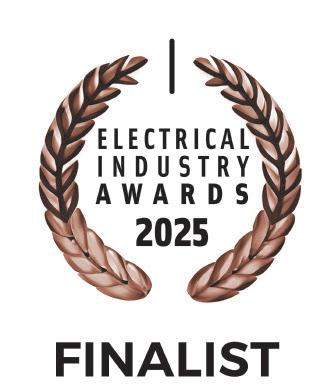


MAIN SPONSOR:

SECTION SPONSOR:
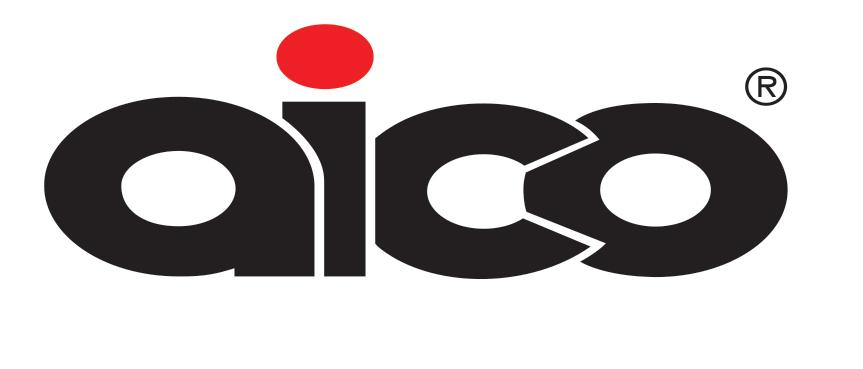
CATEGORY SPONSORS:
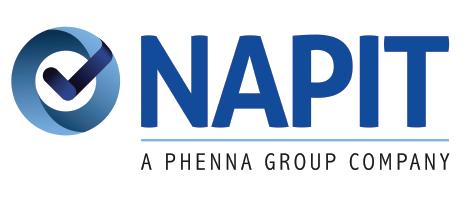

ACaroline Shaw, Channel Marketing Manager at Dimplex UK, explains why the next stage of the UK’s energy transition isn’t just about generating renewable power - it’s about how homes use, store and manage it more intelligently
s the UK electricity grid continues its shift towards renewables, the challenge is no longer just about generating low-carbon power, it’s about how we use it. Wind and solar are transforming our energy mix, yet their output doesn’t always align with when homes need heat or hot water. The real opportunity now lies in how we adapt consumption to complement renewable generation.
Flexibility is the missing link between renewable supply and everyday demand. As a growing proportion of electricity comes from variable sources, the grid needs ways to store and shift energy intelligently. That’s where the next generation of smart electric heating and hot water systems can play a vital role - not by producing renewable energy themselves, but by helping homes make better use of it.
Aligning demand with supply
In a decarbonised energy system, timing is everything. The lowest-carbon electricity is often available at times of low demand, which means that without flexibility, much of that potential goes underused. Smart electric heating with energy storage can help bridge that gap. By shifting consumption to periods when renewable generation is high or electricity is cheaper, households can reduce both carbon intensity and cost while maintaining comfort.
Dimplex’s approach to smart heating and hot water is built on this principle, with the focus on enabling homes to interact intelligently with the grid by storing energy when it’s most sustainable and releasing it when it’s needed most. This adaptability turns homes from passive consumers into active participants in the energy transition.
Smart storage: the quiet enabler
The evolution of electric heating over the past decade has been dramatic and modern high heat retention (HHR) storage heaters, such as Dimplex Quantum, are designed around responsiveness and control. They store low-carbon electricity during off-peak periods or when renewable energy is plentiful, then retain it using the advanced insulation technology until it is required, releasing it to provide consistent warmth when it is wanted.

This simple shift transforms how energy flows through the system: rather than drawing heavily from the grid at peak times, homes can rely on stored energy that was charged when conditions were cleaner and cheaper.
Smarter hot water
Heating water efficiently and intelligently is another important part of the energy picture. The Dimplex Edel hot water heat pump for example, uses energy from the air to produce hot water, delivering significant efficiency improvements compared to traditional electric cylinders. But the real benefit lies in control, with the ability to schedule heating cycles to coincide with periods of renewable abundance or lower carbon intensity.
Hot water represents a sizeable share of household energy use all year round, yet it’s often overlooked in discussions about flexibility. By connecting and automating when water is heated, households can further smooth out demand and use more of the greenest energy available. The result is not just greater efficiency and lower bills, but a more balanced, responsive energy system overall.
As electric heating, hot water systems, heat pumps and EV chargers become more common, the ability to coordinate them will define how successful the energy transition is at household level. Smart controls and zoning bring everything together, enabling systems to
communicate, optimise comfort and manage consumption in a way that supports both the user and the wider grid.
Connected control platforms allow for remote management, performance insights, and automatic adjustments based on usage and tariff data. They ensure that homes are not simply efficient in isolation but actively contribute to the stability and decarbonisation of the electricity network.
Quantum, when purchased together with the Dimplex Hub, works seamlessly with Dimplex Control – its adaptive settings learn household routines and climate conditions, while features like Boost and Away modes can be activated in seconds through the app. This type of built-in agility allows households to benefit from lowercarbon, lower-cost electricity without needing to actively manage when their heating runs.
Flexibility: a household advantage
The path to net zero requires as much innovation in how we use electricity as in how we generate it. While renewables are transforming the supply side, intelligent heating and hot water systems are transforming demand. By providing adaptable storage, control and communication, these technologies make it possible to extract the full value of renewable generation, meaning cleaner energy doesn’t go to waste.
Supporting this shift means equipping installers and specifiers with the right knowledge and tools to design smarter systems. Through the Dimplex PRO Installer Club, Partners gain access to dedicated training, technical guides and support, alongside a suite of online tools for sizing, specification and full home integration. These resources make it easier to design systems that perform efficiently and deliver long-term benefits for end users.
The future of home energy will be defined by integration: heating, hot water and control systems working in harmony to balance comfort, cost and carbon. The technology exists today; the next step is making its benefits understood and accessible across every type of property. The smarter our homes become, the more effectively we can unlock the true value of renewable energy.
For more information, visit www.dimplex.co.uk



















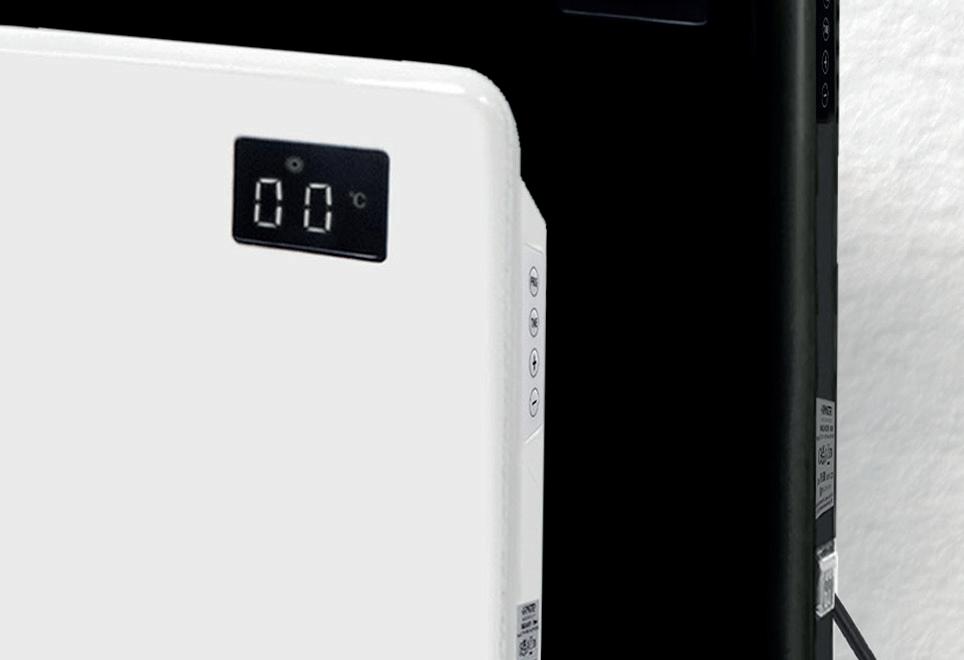
• Available in 1kW, 1.5kW and 2kW.
• User friendly soft touch buttons
• Only 4 buttons for easy & quick programming


• LED back-lit display for low light use

• Matt white and matt black nish



• Minimalist vent free design, while maintaining even heat distribution






The UK’s 2022 carbon emissions on a consumption basis (i.e. the carbon in what we consume rather than just what we produce) was 739 million tonnes (Mt) of CO2e, but taking out the 404Mt of emissions associated with imported goods leaves us with 335Mt. Of that, 63Mt (19 per cent) came from UK households’ heating emissions from fossil fuels and 61Mt (18 per cent) from UK transport emissions generated by UK households. So nearly 40 per cent of what we consume and can directly impact in the UK comes from burning (mostly) gas and oil to heat our homes and petrol or diesel in our cars.
It is therefore clear that radically rethinking how we heat our homes and power our cars is essential. It is also clear that the answer is not getting incremental improvements in efficiencies, and it’s not hoping that green hydrogen will be the solution (it won’t be): the ‘Big 3 Solutions’ here are (1) electrifying home heating , (2) electrifying our cars, and (3) producing that electricity with radically less fossil fuel in the mix than before.
#1 above means deploying heat pumps at a far greater level than we are seeing today (and heat pumps, not other technologies, are the answer here), #2 means accelerating the shift to electric vehicles (hybrids won’t cut it) and #3 is mostly for government but domestic solar PV will also have a part to play.
The common factor in much of the above is an electrified home: some combination of a heat pump, EV charger, solar panel and battery set up, and smart tech to control it. And while there are some properties that won’t be able to go this way - mid-floor flats are tricky to put a heat pump into, and impossible to put solar panels on, for instance – there is more applicability than is often thought, and enough to get most of the way we need to get to. Twothirds of homes have off-street parking (needed for domestic EV charging) but the overlap with car ownership and mileage is even stronger, and mid-floor flats tend not to use much power or need much heat, and there aren’t actually that many of them compared to houses.
The challenge, though, is that even if we can theoretically deploy the technology, there are risks implicit in how electricity supply and demand might change at a household level. Imagine a ‘typical’ home, with 3,000kWh of electricity demand today, a 12,000kWh gas bill and one car driving 6,000 miles. Then imagine we electrify it.
If the heat pump is 400 per cent efficient (a good result) we have an extra 3,000kWh of

By Simon Bones, Founder of Genous
electricity demand from that and, assuming our EV does 3 miles per kWh (which is typical) then another 2,000kWh from that – we now have a 3,000kWh house becoming an 8,000kWh house.
If we scale that up nationally and don’t think about when we use that demand (we charge the EV at 6pm at the same time as making supper and have the heating on, for instance) or the supply (e.g. we want to dump our excess solar into the grid at the same time on a sunny July day) and we have a problem because the grid will require huge investment to upgrade it to deal with these huge flows at the low voltage network level.
There are ways to make this more manageable. Grid upgrades – and we’re talking at the LV level here, though Big Solution #3 also needs lots of HV grid investment separate to this - are not going to be avoidable, but there are also ways to make things more resilient.
Let’s assume now that we add a 10-panel solar PV array to our imaginary property. We might get 4,000kWh of generation from that through the year (which also supports Big Solution #3), and if we can schedule our EV to charge when the grid is quieter or we have surplus generation to export, and use home battery storage (whether a stand-alone battery or a bi-directionally charging EV) to further minimise solar export so we self-use more, and
also use that battery to buy cheap power to supply the heat pump, then we could see lower bills and also less stress on the grid. A more circular home is cheaper to run, less wasteful and requires fewer external costs to enable it –particularly once this becomes common rather than a home oddity.
And what does this mean for the industry?
The good news is that there is going to be a huge volume of work required both to upgrade the grid infrastructure but also to electrify properties, which means more skilled work. Home incoming power upgrades will be needed to support bigger loads, more sophisticated systems will be needed to manage how electricity is generated, used and stored, and these will need designing, installing, commissioning and maintaining.
The bad news is that the ageing workforce and relative lack of incoming resource is challenging: we need more people entering the industry not only to offset those retiring but also to pick up this volume challenge, and more training to ensure that those working in the space are able to work with what are inherently more technologically advanced systems than seen in the industry previously.
Whatever happens, though, home electrification is going not only to transform how we all live and travel but also change our whole relationship with home energy.
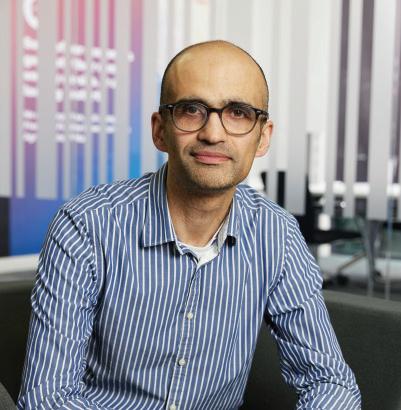
TRising non-commodity charges and grid pressures are driving businesses toward on-site renewables. Vish Sharma, Head of Power Purchase
Agreements at npower Business Solutions (nBS), explains how CPPAs and local generation are helping firms stabilise long-term energy costs
he UK’s energy market is undergoing rapid change as clean power moves from ambition to reality. Delivering the scale of renewables means building significant new infrastructure. However, this transformation comes at a cost. Our Business Energy Tracker 2025, which captures the views of more than 130 of the UK’s largest industrial energy users, found that 79 per cent of businesses expect energy costs to rise in the next year, and 97 per cent are concerned about the cost of the low-carbon transition. In addition, it revealed that energy is the number one business risk for the fourth consecutive year, with many businesses reporting that energy costs are negatively impacting confidence.
As a result, businesses are increasingly looking for solutions to manage risk. While measures such as energy efficiency and the installation of energy management technologies are popular, on-site energy generation, including solar photovoltaic (PV) and wind, now plays a central role in how businesses manage long-term energy costs and protect against market volatility. In fact, 40 per cent of large energy users now plan to invest in on-site generation. Installing an on-site asset was once primarily to meet sustainability targets, but the focus has now shifted to financial stability.
driving
Behind the wholesale price of energy sits a quieter driver of invoices: non-commodity charges. These are additional costs on top of the actual energy price, including policy, network, and system charges that fund the UK’s transition to clean power. Our Business Energy Tracker found that over half of businesses say noncommodity charges already account for at least a quarter of their energy invoices. Our forecasts suggest this figure could reach 76 per cent by 2030, making non-commodity charges the dominant feature of energy invoices. Rising non-commodity charges are prompting businesses to rethink how they source and manage power. Strategies now focus on reducing exposure to grid costs and securing competitive supply. Installing an on-site renewable asset is an increasingly effective way to achieve both.

As grid-connection queues and infrastructure bottlenecks slow large-scale projects, on-site generation offers a reliable alternative route to a clean power supply. Generating power on-site also helps businesses avoid many levies and standing charges associated with grid consumption, enabling them to manage risk and strengthen resilience. For many industrial and commercial sites, the ability to generate, store, and export power creates a more predictable cost base, helping them stay competitive.
Unlocking investment via CPPAs
Many businesses want to invest in renewables but face financing barriers. As a result, CPPAs are becoming a popular way to overcome them. In fact, according to the Business Energy Tracker, 47 per cent of businesses want the government to prioritise the development of the CPPA market. A CPPA is a long-term agreement between a power generator and an end user, usually a business with high energy demand. For new or upgraded on-site projects, a CPPA can underpin financing and provide the certainty needed to unlock capital investment. For generators, it provides a route to sell their power and secure a steady income. At the same time, the business gets predictable prices for 10-15 years and the advantages of using renewable power. CPPAs reduce risk on both sides, helping businesses to manage affordability
while giving generators and investors confidence to develop the asset.
The growing opportunity for electrical professionals
The expansion of on-site renewables also creates an opportunity for electrical contractors. As more organisations choose to generate on-site power, demand is growing for professionals skilled in installing renewable energy assets, energy management systems, and smart controls. These capabilities are quickly becoming essential for both businesses and the UK’s broader transition to renewable energy.
Essential infrastructure for the decade ahead
The UK’s clean power future depends not only on offshore wind or grid-scale solar, but also on thousands of decentralised assets across factory rooftops, commercial estates and industrial parks. Our Business Energy Tracker has shown that there is real demand from businesses for on-site generation and CPPAs, which could help support the investment case for new or expanded energy projects. This is an opportunity for both energy generators and electrical professionals to support the growing on-site renewables market.
View npower’s Business Energy Tracker 2025 at: npowerbusinesssolutions.com/business confidence business- energy-tracker-2025
Can you tell us what inspired you to start Shocking Energy?
I’ve spent over 40 years building software and data platforms for the energy sector, so I’ve seen first-hand how much friction contractors face just to do a safe, compliant install. Shocking Energy came out of a simple frustration: too many good installers were being held back by clunky systems, manual paperwork and opaque accreditation rules.
Our mission is to let installers install and let the software quietly take care of the complexity in the background. That’s why we’ve built an AI-driven field service platform and a specialist accreditation service that reflect how engineers actually work on site.
Can you explain how AI is used in your system and what value it brings to installers?
AI underpins three big areas for us: planning, capture and compliance. In planning, our AI looks at skills, job priority, location and time windows to help schedulers get the right engineer to the right job, first time.
On the capture side, we support things like AI-assisted job creation and structured checklists so engineers can build jobs from templates, images and previous patterns rather than starting from scratch. And on the compliance side, AI helps pre-fill RAMS, spot missing evidence and validate data before it ever hits a regulator or a DNO, which cuts rework and rejection rates dramatically.
How does Shocking Energy’s platform help maintain regulatory compliance?

How does your platform streamline multi-party workflows?
Most renewable or metering jobs involve at least three parties, supplier, DNO and installer, plus sometimes a MAP, finance partner or OEM. Our approach is to make the job the single source of truth, then let the system handle who needs to know what and when.
In practice that means one job flow feeding multiple outputs: appointments for your engineers and sub-contractors, automated D-flows and RGMA messages for market parties, and clear dashboards for your operations team. Sub-contractors only see the jobs relevant to them, but the prime contractor retains end-to-end visibility and an audit trail for every message and status change.
In what way can AI-driven field service contribute to the broader energy transition?
Q: A:
How do you see the role of data analytics evolving over the next 5–10 years?
Today, most contractors are still in the “can we just find the job record?” phase. Over the next decade, the value shifts to “what is this data telling us?” I expect to see far more contractors using that data for scenario planning, for example, how SIP accreditation or a new product line affects their throughput, cash flow and risk profile before they make big bets.
Q: A:
A Q: A: A: A: Q: Q: A: Q: Q: A: Q: A:
We treat compliance as an output of doing the job properly, not a separate admin task. Every step in JobWay. AI: photos, signatures, test results, checklists is time-stamped and tied to a specific job and engineer, so you have a complete audit trail by default.
From that same data we generate the things auditors and clients care about: RAMS records, method statements, completion reports, market messages and certificates. For SIP and EMO operators, our market messaging module automatically builds and sends the right D-flows and metering events, with full traceability back to the original job.
The energy transition is ultimately a deployment challenge: can we get enough high-quality installations done, safely and profitably, at scale? AI-driven field service helps by making existing teams far more productive – better routing, fewer revisits, less time chasing paperwork and more time on tools.
Industry analysis suggests that appropriate AI adoption could halve the field services skills deficit by 2030, simply by improving utilisation and upskilling. For contractors on the ground, that translates to installing more heat pumps, EV chargers and solar systems per engineer, while keeping compliance tight so you’re not storing up problems for later.
What are the major compliance challenges faced by installers today?
The big challenges we hear about are: interpreting complex codes like CoMCoP, managing SIP and EMO accreditation, staying on top of REC and DCUSA updates, and proving that what happened on site actually matches what’s in the paperwork.
We tackle that on two fronts. Our accreditation team guides companies through a modular SIP/EMO journey, documentation, questionnaires, market testing, role codes and EES access, with direct support through audits. Then JobWay.AI makes the ongoing compliance operational: jobs, flows and evidence all in one place, with clean records ready for regulators, clients or insurers.
How do you keep your system up-to-date with changing regulations and requirements?
We operate as both a software company and a specialist consultancy, so we stay very close to Ofgem frameworks, REC changes and industry codes as part of our professional services work. When a new requirement lands, we don’t just issue a memo, we update templates, workflows and validation rules in the platform.
Because JobWay.AI is cloud-based, customers benefit from those updates automatically. For accreditation clients, we also run regular check-ins to make sure their documentation and operational processes still match the latest rulebook, not the version from three years ago.
Q:
What feedback have you received from contractors about your platform?
The feedback that makes me happiest is when engineers say, “This actually makes my day easier.” They like that the mobile app is fast, works offline, and lets them capture everything once, photos, tests, notes, signatures, without bouncing between three systems.
From management teams we hear that accreditation is no longer a mystery. A good example is Aira, who we helped through SIP accreditation and onto a fully digital, end-toend installation journey, they’ve described it as a strategic and operational game-changer because they can now control the full process, not wait on third parties.
How do you see the role of field service software evolving?
Field service software is moving from “digital clipboard” to “control centre”.
In the past, it was basically scheduling plus job notes; in future it will orchestrate everything from finance and stock through to accreditation and market messaging.
I also think we’ll see more sector-specific platforms rather than generic tools. Energy is different to, say, air-con servicing, you’ve got market flows, regulatory audits and safetycritical work. Systems like ours are built with those realities in mind, so they can shoulder more responsibility and let teams run a genuinely digital-first, compliant operation.
What advice would you give to electrical contractors looking to future-proof their business? Firstly, treat data as an asset, not a by-product. Standardise how you capture information on every job, because that is what will power automation, compliance and better commercial decisions later on.
Secondly, start viewing accreditation and compliance as revenue enablers rather than hurdles. SIP status, for example, gives installers full control over isolations and opens the door to more profitable work and with only a few dozen SIP operators in the UK, early adopters gain a genuine strategic edge. Shocking Energy has already supported almost half of all SIP-accredited businesses nationwide, delivering the full end-to-end process for 18 of the UK’s 35 SIP operators. Finally, begin small with digital tools, demonstrate the value in one area, and then scale.
A: Q: Q: A:
What are the most significant trends electrical contractors should watch out for in the next few years?
I’d highlight four: electrification, skills, regulation and customer expectations. Electrification of transport and heat is driving sustained demand for EV, solar and heat pump installs; at the same time, skill
Launched by the Scolmore Group in 2021, Elucian is a trusted name in circuit protection and has enhanced its product offering with a bespoke in-house laser etching service. This service is suitable for single phase consumer units in domestic and commercial applications that require personalised branding. This enables businesses to reinforce their brand identity and add a touch of professionalism to their electrical installations.

As well as producing precise, permanent etching of logos and branding, this service can also etch a variety of custom designs. This can include QR codes, technical specifications, and circuit identification.
This specialised service stands out as one of the few in the market offering fully customised consumer units, etched in-house at Scolmore Group’s headquarters. Since the launch of Elucian, close to 300 bespoke laser etching jobs have been delivered, each tailored to required specifications, proudly featuring company logos and branding. To date, this has included the etching of almost 10,000 consumer unit boards, demonstrating the strong and growing demand for customised, premium-quality solutions. The system’s flexibility accommodates both high-volume orders and tailored projects, making it an ideal choice for businesses seeking distinctive branding or design integration.
The bespoke laser etching service is also available for the full range of Click Scolmore’s GridPro modules which can be customised to suit the specific requirements of any project. All GridPro module finishes can be etched, offering a wide range of options for customers to create a personalised and professional installation.
Enquire about Elucian’s bespoke laser etching service by contacting local Area Sales Managers. For more information on Elucian’s consumer units and circuit protection devices, visit the website - https://elucianuk.com/ - or download the Scolmore Group app. www.elucianuk.com
shortages mean you’ll need tools that help each engineer do more, safely.
On regulation, schemes like SIP, EMO and MCS, plus their alternatives, will continue to shape who can do what work and on what terms. And finally, customers increasingly expect a digital experience: clear communication, fast documentation and evidence they can access on their phone. Contractors who align with those trends will be in a much stronger position than those who treat them as “nice to haves”.
How can digital tools help contractors thrive in a rapidly changing landscape?
The key is to use digital tools to redesign how you work, not just to replicate old processes on a screen. For example, turn your install journey into a single flow where engineers capture once, and the system automatically generates RAMS, certificates, market messages and invoices. When contractors do that with platforms like JobWay.AI, and pair it with the right accreditations, they shorten lead times, reduce errors, prove compliance effortlessly and free up capacity to take on more and better-margin work. That’s how you move from “keeping up” to setting the pace in your market. For more information, go to: https:// shocking.energy/.
Fast
ESP, continues to lead the way in fire and safety technology with its Espire Optical Smoke Alarm. Designed to deliver fast and reliable detection of slow, smouldering fires, the Optical Smoke Alarm is part of the comprehensive range of Espire high performance Fire and CO Alarms launched earlier this year, reinforcing ESP’s reputation for innovation, quality, and compliance in life safety solutions.

Designed to deliver fast and reliable detection of slow, smouldering fires, the Optical Smoke Alarm is part of the comprehensive range of Espire high performance Fire and CO Alarms launched earlier this year, reinforcing ESP’s reputation for innovation, quality, and compliance in life safety solutions.
Featuring a compact and discreet design, the Espire Optical Alarms are equipped with advanced infrared sensor technology that excels in detecting early sign of combustion particles. Designed and manufactured in ESP’s dedicated production facility, each unit undergoes rigorous testing – including multiple sensor and functional checks – to ensure total reliability.
Key features include a 24-hour memory function, auto-dimming LED, dust compensation, and stainless-steel insect mesh barrier, designed to reduce nuisance alarms and improve accuracy over time.
Installers can choose from three power options to suit varying requirements:
• Powered by mains with a sealed tamper-proof 10-year lithium battery.
• Powered by mains with 9v replaceable battery.
• Powered by a sealed tamper-proof 10-year lithium battery.
The Espire Optical Smoke Alarms are to be installed in accordance with BS 5839-6. All models are tested and certified to BS EN 140604 and are LPCB (mains powered options) and TUV (battery option) certified. www.espireuk.com






EMAIL lisa.peake@purplems.com TO SHARE YOUR HOBBY

Lisa Peake speaks with Ayça Donaghy, CEO of The LIA, about the bold emergency-lighting awareness challenge that took the team up a Mount Snowdon in the dark. Ayça shares how unity, determination and a clear mission carried them through an experience that was as meaningful as it was demanding
I’m the CEO of The LIA, representing manufacturers and suppliers of lighting in the UK. My role is very broad and ranges from strategic planning and advocacy with government and industry bodies, to overseeing testing, certification, training, and member services. No two days are the same; one day might be spent refining our technical governance, the next leading a panel on lighting’s critical role in smart buildings.
I joined The LIA towards the end of 2022. What drew me to the role was the opportunity to make a difference in an industry that affects every corner of our built environment. Lighting sits at the intersection of design, safety, sustainability, and wellbeing and I was excited by the chance to help shape its future through a respected, not-for-profit organisation.
As CEO, I also saw the opportunity to lead the transformation of the Association itself, to bring a fresh perspective, modernise our

approach, and ensure we remain relevant, progressive, and fit for purpose in today’s fast-evolving world. I don’t necessarily fit the traditional mould for this kind of role and it made it feel like an even bigger privilege to be approached to help bring The LIA into closer

alignment with the times we live and work in. For me, it’s about the impact. Whether it’s influencing national policy, supporting members through regulatory change, or raising standards around product safety and compliance, it’s deeply rewarding to see the industry grow stronger through the work we do. Equally important is the passion of the people I work with both within our team and among our member volunteers.
Scaling Snowdon at night to shine a light on safety
The idea came from our Technical Operations Manager, Dan Griffiths, who wanted to do something bold to raise awareness of emergency lighting’s life-saving role. As soon as I heard it, I knew we had to make it happen. Who was I not to back such a powerful concept and with that, of course, take part myself?!
I had never taken on a challenge quite like this! I’m generally active but hadn’t done a mountain climb, especially not in the dark at 3am. Let’s just say I respected the challenge but definitely underestimated how tough it would be in pitch darkness and freezing temperatures. We squeezed in some practice walks, including one final training session just before the event, but life and work commitments meant we all went in knowing this was going to be a serious test of mental resilience as much as physical fitness. The preparation was more about mindset, teamwork, and being clear on why we were doing it.
The very beginning. We were standing in a pitch-black car park at 3am, trying to power up our emergency lighting gear and even that was stressful. It drove home the importance of emergency lighting just working automatically,
without hesitation, in critical situations. That moment made the whole message of the challenge very real.
The combination of cold, darkness, and uneven terrain was relentless. There were points where the wind and chill cut straight through us, and the climb felt never-ending. As the ascent wore on, we naturally split into two groups, with the lead group about 20-30 minutes ahead. A few injuries in the second group slowed us down further, and eventually, we couldn’t even see the others’ lights anymore… there may have been a tiny bit of jealousy knowing they’d be finishing long before us!
But team spirit was everything. Even in the tougher group, people checked in on one another constantly, sharing light, encouragement, and even snacks. It’s what got us through.
There were definitely moments during the climb that helped lighten the mood. There were plenty of laughs, frozen hair, beards, and some colourful language aimed at the steeper parts of the trail. But there were also some unexpectedly magical moments. The moonlight reflecting off the lake in the darkness was stunning, and the red trail of our bat-friendly emergency lighting snaking up the mountain created a surreal, glowing
Ayça Donaghy with Martin Green (Hochiki) at the end of the Snowdon night climb


path in front of us. As we approached the summit, we were treated to a clear view, which is remarkable for March, and the many colours of the sunrise slowly spilling across the sky made it all feel truly special. Despite the cold and the fatigue, those moments helped lift our spirits and reminded us why we were doing it.
We stayed close within our groups, physically and emotionally. Whether it was watching each other’s footing, setting small targets and counting steps together before the next break or simply checking in with a “you okay?” every few minutes, that connection and mutual support made all the difference.
It was bitterly cold with some fierce winds the higher we got. The frozen ground and wind chill made things much harder physically, but it also made the achievement even more meaningful. The conditions brought the group closer together and reinforced the seriousness of what we were simulating: emergency scenarios in harsh environments.
Reaching the finish line was a mix of pride, relief, and honestly… disbelief! It was a
huge personal achievement and a moment of reflection on how important the cause was. Looking around at the others, all of us exhausted but smiling, it was clear we’d done something special together.
During this challenge, I learned just how much people can endure when they believe in a shared cause. Personally, I also realised that I sometimes downplay how tough a challenge will be, but stepping into the unknown with the right people around you makes it possible.
The EIC supports real people in our industry through incredibly difficult moments, financial hardship, illness, mental health challenges. This climb showed just how powerful we can be when we come together, of course, to raise funds, but also to raise awareness and demonstrate the values we stand for. Supporting causes like this strengthens the whole industry.
This challenge certainly won’t be the last. Whether it’s another physical challenge or a different kind of awareness initiative, I’m always up for something that unites the industry behind a meaningful cause and I know Dan (Griffiths, LIA) has already has a list of suggestions lined up for next year. www.thelia.org.uk
“The combination of cold, darkness, and uneven terrain was relentless. There were points where the wind and chill cut straight through us, and the climb felt never-ending. As the ascent wore on, we naturally split into two groups, with the lead group about 20-30 minutes ahead. A few injuries in the second group slowed us down further, and eventually, we couldn’t even see the others’ lights anymore…”

By Ian Wakelin, Director of Jobsite Solution Specialists
Construction professionals across the UK and Ireland are facing unprecedented challenges. Brexitrelated supply chain disruptions, pandemic-driven delays and a chronic shortage of skilled tradespeople have created perfect storm conditions. With ambitious housing targets, infrastructure expansion and renewable energy projects demanding attention, pressure to accelerate project delivery has never been greater. But here’s the critical question: is speed really worth it if quality takes a hit?
The productivity dilemma
The statistics paint a stark picture. While the wider economy has achieved 50 per cent productivity growth over two decades, and manufacturing has seen a remarkable 90 per cent improvement, construction has managed just 10 per cent. For contractors and tradespeople, this translates into inefficiencies, material waste and squeezed profit margins on increasingly complex projects.
Recent Q4 2024 figures reinforce these challenges. Construction output rose only 0.5 per cent overall, declined 0.2 per cent in December, with new orders dropping 2.4 per cent while costs increased 3 per cent year-onyear. For construction professionals juggling multiple projects, these economic pressures combine with operational challenges: fewer qualified workers, increasingly sophisticated building systems, stringent compliance requirements and unpredictable weather affecting site progress.
In these conditions, selecting budget tools to reduce upfront costs seems tempting. However, the long-term consequences rarely justify short-term savings, particularly when safety and compliance are at stake.
The hidden costs of shortcuts
Every experienced contractor knows that cutting corners today creates costly problems tomorrow. Compromising on tool quality triggers expensive chain reactions: faulty installations lead to system failures and emergency callouts, improperly completed work creates safety hazards and compliance issues, unreliable workmanship damages professional reputation, and substandard results risk legal complications, insurance claims and regulatory penalties.
In construction work, these aren’t just business risks, they’re safety risks that threaten
both workers and end users. Poor-quality tools can compromise work integrity, create workplace hazards and lead to installations that fail safety standards.
Premium tools: investments that deliver daily returns
MILWAUKEE understands that for construction professionals, tools aren’t just another purchase; they’re critical business investments directly impacting safety, efficiency and profitability.
Quality tools reduce costly downtime from equipment failures, minimise rework from imprecise cuts or connections, and ensure consistent results that meet or exceed industry standards. Their durability withstands demanding construction environments, from dusty building sites to cramped working spaces.
The initial price difference between premium and budget tools quickly disappears when measured against these benefits. If a MILWAUKEE tool enables one additional job completion each week or prevents a single costly emergency callout, the value becomes evident, especially considering potential liability costs from work failures.
Moreover, contractors could see these tools pay for themselves within four weeks by saving an estimated eight hours per week, equivalent to two extra billable jobs. This provides a clear ROI timeframe that strengthens the financial justification for investment in premium tools.
Innovation transforming workflows
MILWAUKEE provides integrated solutions specifically designed for construction professionals’ daily challenges.
The cordless revolution, led by M18 and M12 battery systems, addresses the common challenge of dependency on site power for firstfix work. MILWAUKEE provides a solution by eliminating the need for trailing leads in active construction areas, significantly reducing setup time and improving site safety. The measurable outcome is a streamlined workflow, allowing construction professionals to complete tasks faster and with greater efficiency.
Cordless freedom offers a solution to the challenge of working in multi-storey buildings without accessible power sources. With MILWAUKEE’s innovation, they can maintain productivity even during power outages or while working around live systems. This results in enhanced safety and efficiency in environments where temporary power supplies are limited.
The MX FUEL Equipment System tackles the issue of using petrol-powered equipment, which can be problematic in occupied buildings due to fumes and noise. MILWAUKEE’s zero-emission alternatives present a practical solution, making it possible to perform tasks in sensitive environments like hospitals, schools, and residential areas with minimal disruption.
ONE-KEY Digital Tool Management addresses the issue of tool security and inventory management, a critical challenge for construction professionals. MILWAUKEE’s solution includes GPS tracking, theft alerts, and performance customization, reducing the risk of tool loss. The resulting benefits are enhanced tool management through detailed usage data for warranty claims and maintenance scheduling. These innovations by MILWAUKEE directly overcome daily productivity barriers faced by construction professionals, providing solutions that maintain the precision and safety standards demanded by the industry.
MILWAUKEE designs tools specifically for the UK and Ireland market. This includes compliance with British Standards and building regulations, adaptation to metric sizing and fixing systems, performance in challenging weather conditions affecting external work, and compatibility with UK-specific components and fixings.
Post-Brexit supply chain realities have made reliable tool suppliers more critical than ever. MILWAUKEEs localised focus ensures consistent availability of trade-specific tools and accessories when contractors need them.
The connection between tool quality and work quality is direct and non-negotiable. Highperformance tools enable precise cuts, accurate measurements, secure fixings and professional finishes that meet industry standards.
Quality tools help contractors maintain consistent standards across multiple projects while reducing physical fatigue through ergonomic design - crucial when working in challenging positions.
In time-pressured environments, premium tools enable professionals to maintain craftsmanship without compromise, delivering work that passes inspection first time and supports long-term business growth through satisfied clients and regulatory compliance.
Batt Cables has announced a new logistics centre in South Yorkshire as part of its long-term growth strategy and to maximise the growing demand for cable solutions in the UK. The new site is a key part of its growth plans, to increase the company’s distribution capabilities. The Doncaster site complements existing Batt facilities in Edinburgh, Manchester, Bristol and Erith.

Among the new roles being created are managerial positions in operations planning, transport and site management. Beyond the management roles, Batt will be seeking to recruit warehouse team managers and operatives who will work
together to ensure this distribution site is sector leading. The facility will house an expanded inventory of essential cables and accessories, enabling Batt Cables to meet customer demand with improved stock availability and reduced transit times.
Equipped with advanced stock management and order processing systems, the new centre is designed to streamline operations, offering quicker response times and greater reliability for clients across industries such as construction, infrastructure, and energy.
The new facility is expected to become fully operational in the coming months, with a phased introduction program underway. www.battcables.com
Unicrimp, part of the Scolmore Group, continues to strengthen its reputation for providing practical, high-quality solutions for electrical professionals with its comprehensive Trade Tub range.
Part of Unicrimp’s extensive Q-Crimp range of cable accessories, and designed with the trade in mind, these robust tubs offer a convenient and reliable supply of commonly used fixings and accessories, helping to improve efficiency.

Each Trade Tub contains a selection of essential components, supplied in durable containers, ideal for transportation, storage, and quick access during installation work. They feature a resealable plastic lid and carry handle, and the tub itself is manufactured from recycled material.
The Red Wall Plugs & Countersunk Screws Tub offers a practical combination of 400 x red wall plugs and 400 x 8 x 1.5-inch countersunk screws, ideal for generalpurpose masonry fixings. The contents are precision-matched to provide strong,
Exclusive to the Axiom Brand, from the CED Electrical Group, the New Axent range of Decorative Wiring Accessories will be available to the Electrical Wholesale trade in the first quarter of 2026.

Ultra-flat and ultra-matt, the comprehensive Axent range of Switches and Sockets redefines minimalism through precision engineering and flawless craftmanship - making it easier and faster to install. The range is meticulously conceived to adorn the most sophisticated interiors and will be available in two versions – a Screwless option with soft curved corners and flush insets plus a Screw down option with more defined corners for a more contemporary look. Available finishes for the Axent range include matt black, matt white, satin chrome and antique brass – the four most popular decorative options in the market today.
Quality is assured with the Axent range, complying with all relevant UKCA, BS, BSEN standards and CE approvals.
For more information, contact your local CED Area Manager, call 0208 503 8500 or visit the website. www.cedelectrical.co.uk
secure fixing performance across a variety of applications.
Optimised for use in plasterboard applications, the Metal Self Drive Plugs & Panhead Screws Tub contains 200 x metal self-drive plugs and 200 x 8 x 35mm panhead screws that eliminate the need for pre-drilling. The self-drive design ensures fast and secure installation, while the panhead screws offer a clean, flush finish.
The T&E Cable Clips Tub contains 400 x 1mm and 400 x 2.5mm T&E clips that have been manufactured with tough, impactresistant plastic and pre-fitted with hardened steel nails, to ensure cables remain firmly fixed in position.
Suitable for use in masonry and breezeblock, the First Fix Kit Tub comprises 100 x 20mm open quick fit cable grommets, 100 x red wall plugs, and 400 x 8 x 1.5-inch countersunk screws - bringing together all the elements in one handy tub to make back box essential installs easier for the contractor. www.unicrimp.com
Click Scolmore has upgraded its GridPro Modules, now featuring advanced LED indication. Featuring a modern design, the new LED indicators offer a brighter, more discreet method of visual notification, replacing the previous neon-based system.
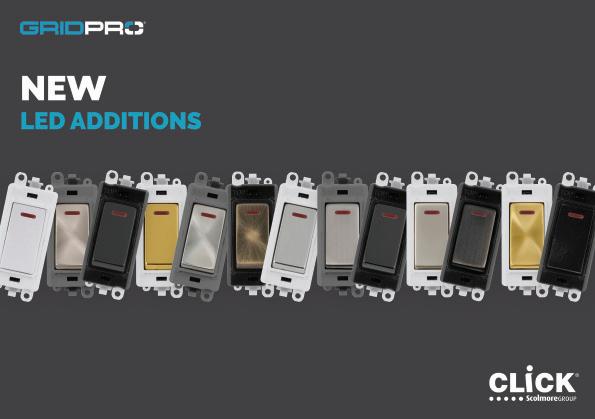
This enhancement brings a modern look to the GridPro range while maintaining its reputation for reliability and performance - delivering a cleaner, more efficient solution in line with evolving market demands.
Inserts are available in Black, Polar White, and Grey, and can be paired with modules in a wide variety of high-quality finishes, including Antique Brass, Black Nickel, Polished Chrome, Stainless Steel, Satin Brass, Pearl Nickel, Polished Brass, Satin Chrome, Matt Black, Matt Bronze, Brushed Steel, Polar White, and Black.
For more information on Click’s full range of GridPro Modules, visit the Scolmore Group website or download the app. www.scolmore.com
Redefines Outdoor Illumination with its new Modular Beelo Bollard Range
The Beelo Bollard is engineered to deliver exceptional performance, long-lasting durability, and adaptable functionality across a wide range of commercial and residential applications. It sets a new standard for outdoor lighting by combining modular interchangeable design, impact resistance, and energy efficiency in one elegant, high-performance system.
The Beelo range uses a modular design with heads supplied separately for quick installation or replacement. Four styles are available in Black or Anthracite Grey.

Each head is prewired with a waterproof connector system for quick, tool-light replacement, reducing maintenance time and supporting sustainability.
Available in standard or emergency versions, each bollard includes a standard base with the option of an impact-absorbing base that flexes and returns upright to minimise damage. Another optional accessory is the 180° shield guard that can effectively block unwanted light spillage, for example, when installed near office windows or residential properties. The shield guard can be retrofitted easily with four screws, securing both halves around the diffuser.
Built for performance in a wide range of outdoor settings, the Beelo Bollard offers IP65/IK08 rating with 360° output, up to 3,600lm and 144Lm/W, plus switchable CCT (3,000–6,000K) and power (14–24W). www.oviauk.com
